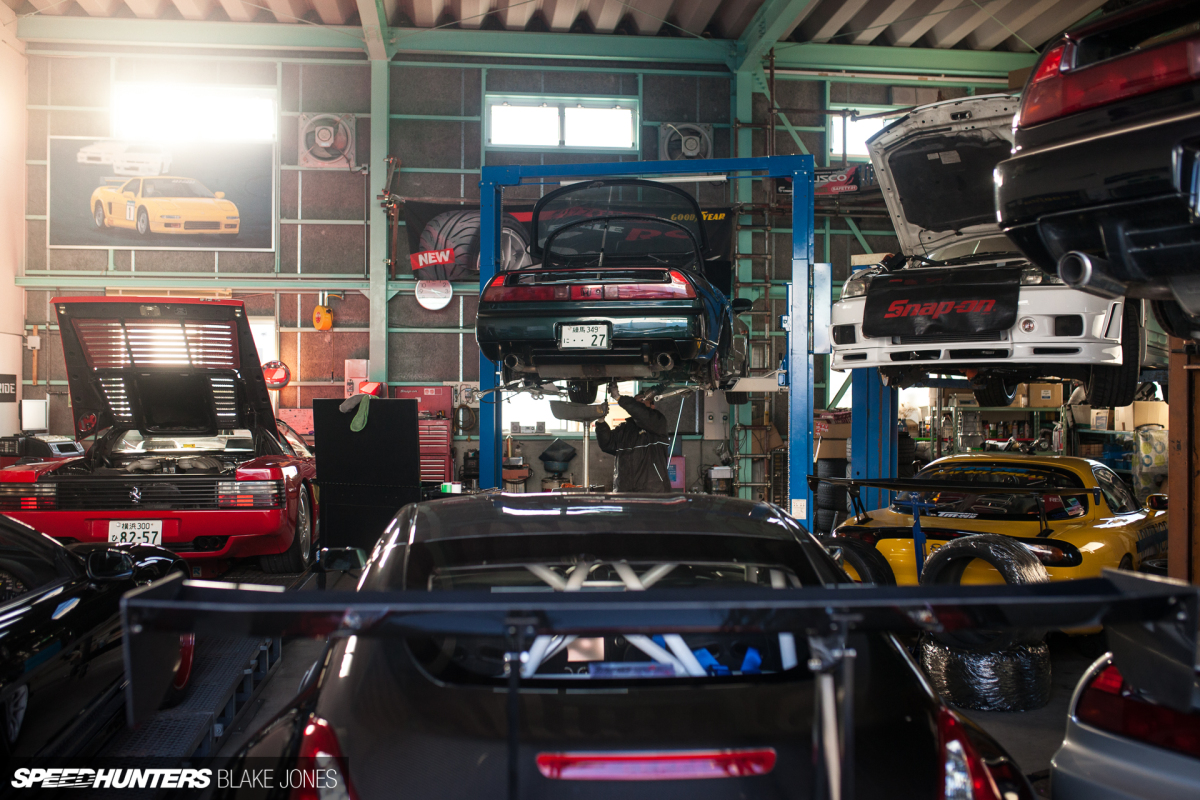
The day I drove away in my NSX for the first time was a pretty surreal experience. Owning a classic ‘supercar’ had always been a dream, and here I was with the keys to one of Japan’s best.
It’s cool to think that the same car has given the same experience to each of its owners before me, but can any used car purchase ever really match that ultimate satisfaction of driving a brand-spanking-new sports car off the dealer lot? I’m sure for 27‘s first owner, it was a mild spring day he’d remember for the rest of his life. He’d ridden out the worst of the economic crash that hit Japan a few years earlier through smarts and hard work, and was finally ready to reward his efforts with the finest sports car Japan’s manufacturers could offer at that time.
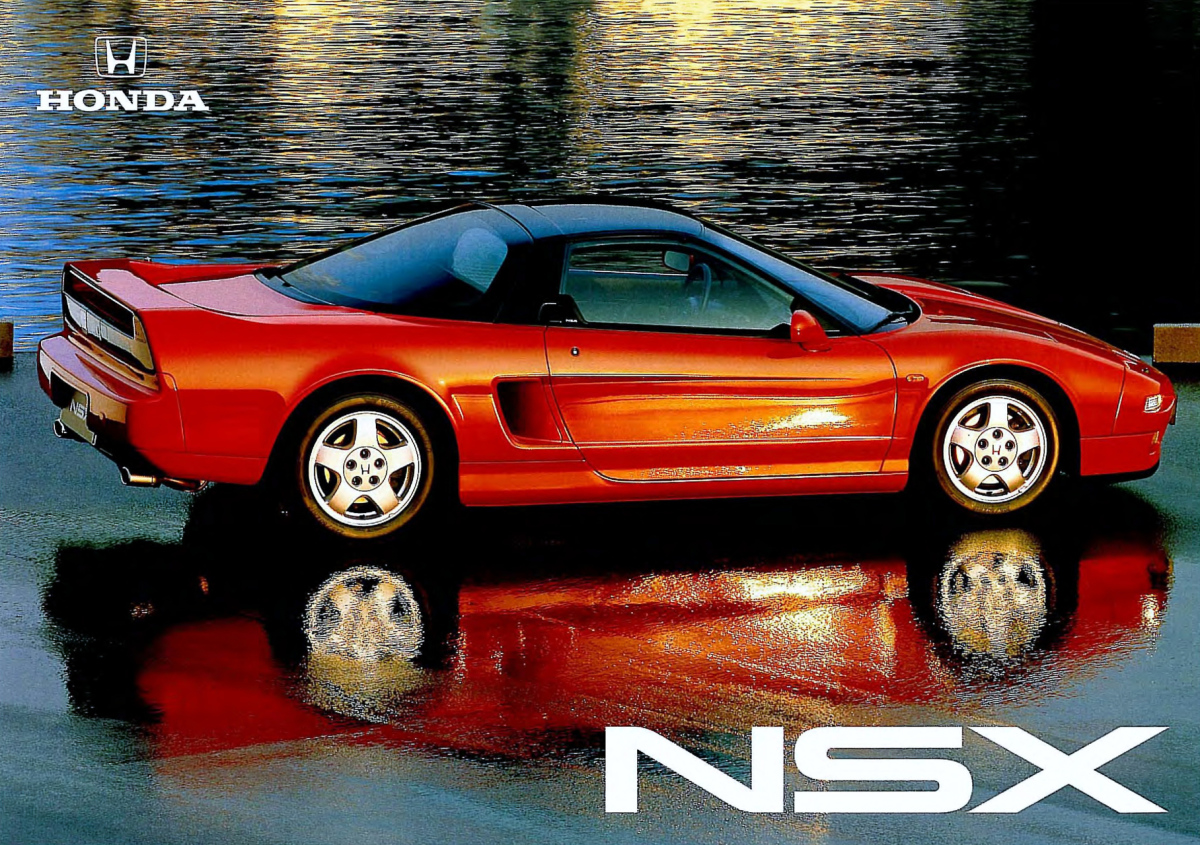
With an aluminium chassis, fighter plane styling and Ayrton Senna’s tick of approval, it was sure to be a winner with the cute girl on the reception desk. Maybe even enough for her to forgive the thinning comb-over.
He requested the car be finished in Charlotte Green Pearl, an understated shade that reminded him of the British Racing Green-clad racers he’d admired as a teenager 30 years earlier. A white (two-tone) interior would raise far too many eyebrows at the Golf club in this post-bubble era, so black it was. The only other option on the list was driver-side keyless entry. Oh, and a 4-speed automatic option for a lazy 600,000yen (about $8,300 in today’s US dollars).
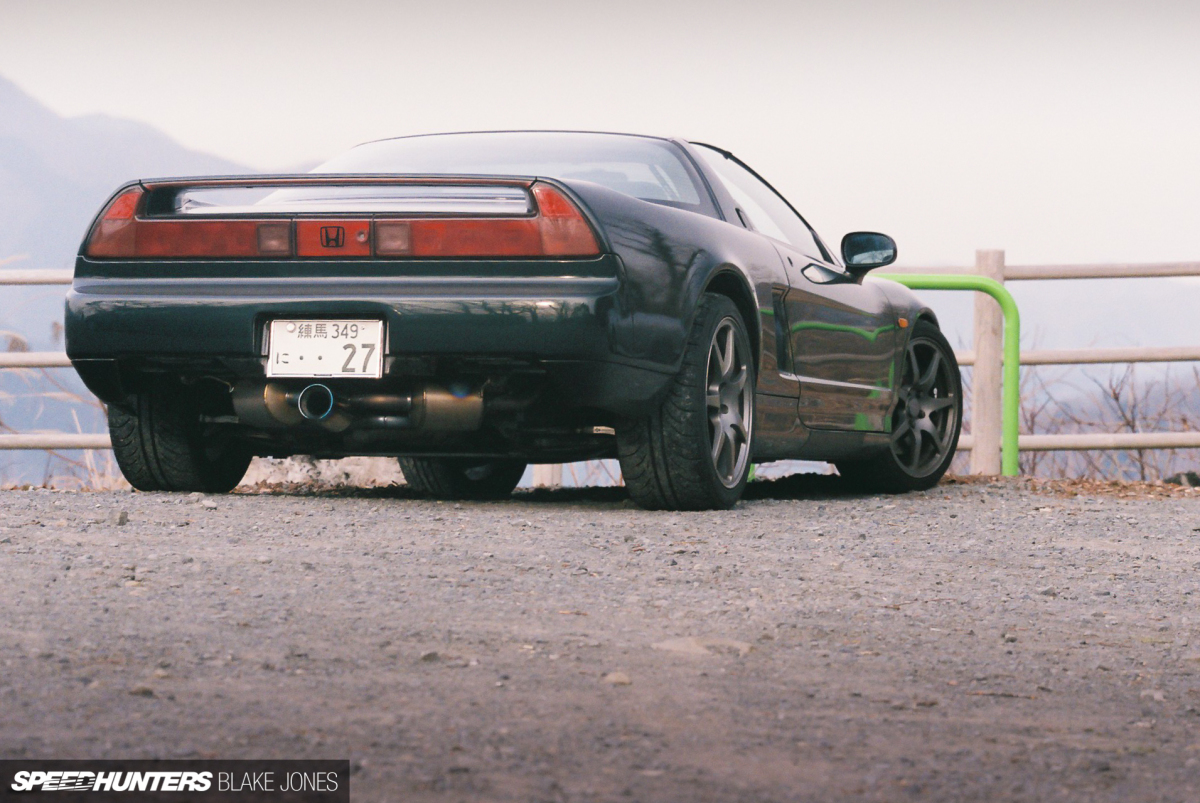
For us driving enthusiasts, asking for your NSX with a torque-converter automatic is akin to ordering your Yamazaki 18 mixed with Diet Coke, but our original owner wasn’t alone. In fact, automatic NSXs outsold the manuals two-to-one in the first few years of sales in Japan. Despite the model’s sporting credentials, it’s become clear to me that Honda’s engineers had daily driver/grand tourer aspirations for the car, and Japanese customers clearly liked the combination of supercar styling and a hands-free shifting experience.

As I touched on in the story about the process of buying the NSX, the current market puts a serious premium on original, un-repaired manual cars. As such, a compromise had to be made somewhere; I either had to settle for a crashed and (questionably) repaired manual, dive into the financial deep-end to secure a clean manual, or finding an automatic with a clean history.
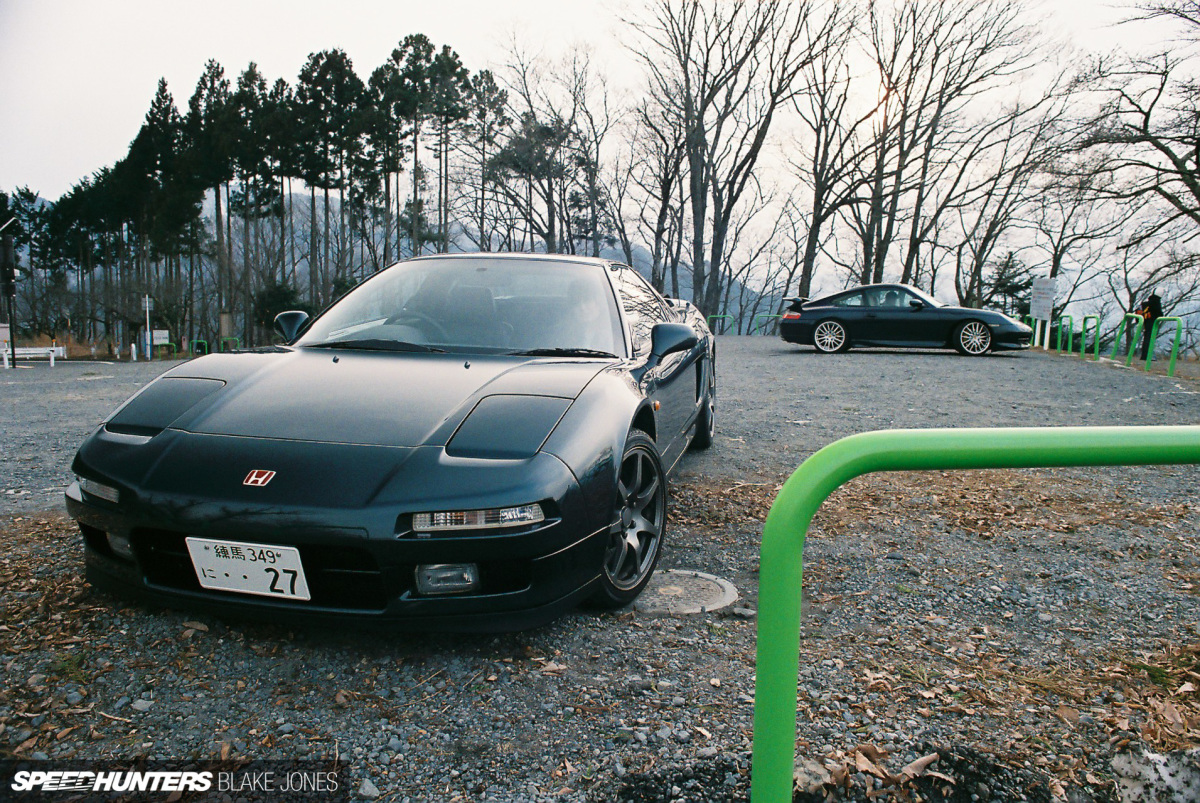
When I started to map out my plan for the car, it became clear that my desired drivetrain upgrades would require significant investment and work even in a base manual car. The cost of dropping the gearbox and installing a performance LSD, shorter final drive and lightweight flywheel was not insignificant. With the money I’d save on buying an automatic, I could not only upgrade the LSD and clutch, but throw in brand new NSX-R mounts, shifter and pedals and still come out ahead. The rest is history: the colour I wanted came up at auction with low kilometres and a big-dollar brake upgrade, I closed my eyes and took a bid, and Project NSX was born.
CHAPTER TWO
An Advanced Approach
Truth be told, the 4-speed automatic was perfectly amenable for the city and highway driving that I was doing, and on the odd touge run it would do a decent job at picking and holding the right gears. But the world has an order – good whiskey should always be served neat, and sports cars need three pedals and a stick.
For the reasons I’ve already outlined, swapping an automatic NSX to manual is not at all uncommon in Japan; most NSX workshops are very familiar with the process, some even advertising it as a specific service on their websites. Strangely though, if you read the English language forums you’ll mainly find comments telling you how misguided you must be to even consider the swap, but dig a little deeper and the stories of people completing it in their garage over a weekend do surface.
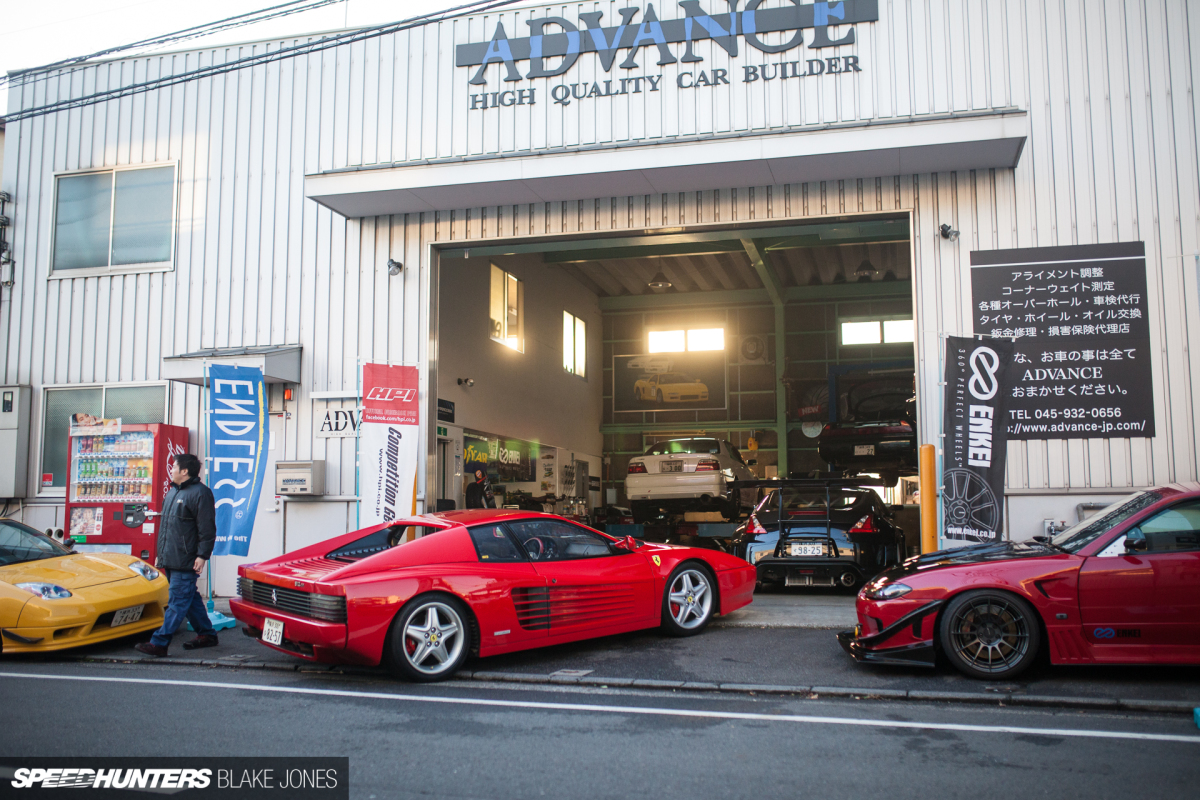
I reached out to a few NSX specialists close to Tokyo to discuss the work, and quickly settled on Advance in Yokohama as the shop for me. Masa and Yagi are a literal two-man operation, but the quality of customer cars hanging around the workshop and their bulletproof reputation in the NSX world made the choice easy. Just see the photos below.
Masa quoted me up for the work based around new NSX-R parts from Honda (surprisingly still plentifully available in Japan) but there was one big decision remaining: whether to use a 5-speed (NA1) or 6-speed (NA2) gearbox. My intention from day one was to go for the 6-speed, reasoning being that it was newer and the extra ratio would be nice to have to exploit the high-RPM power band and perhaps lower my highway cruising RPM as well. However, Masa warned me that we could be facing a 12-month wait to receive a new case from Honda because they were on back-order and rarely, if ever, come up for sale secondhand.
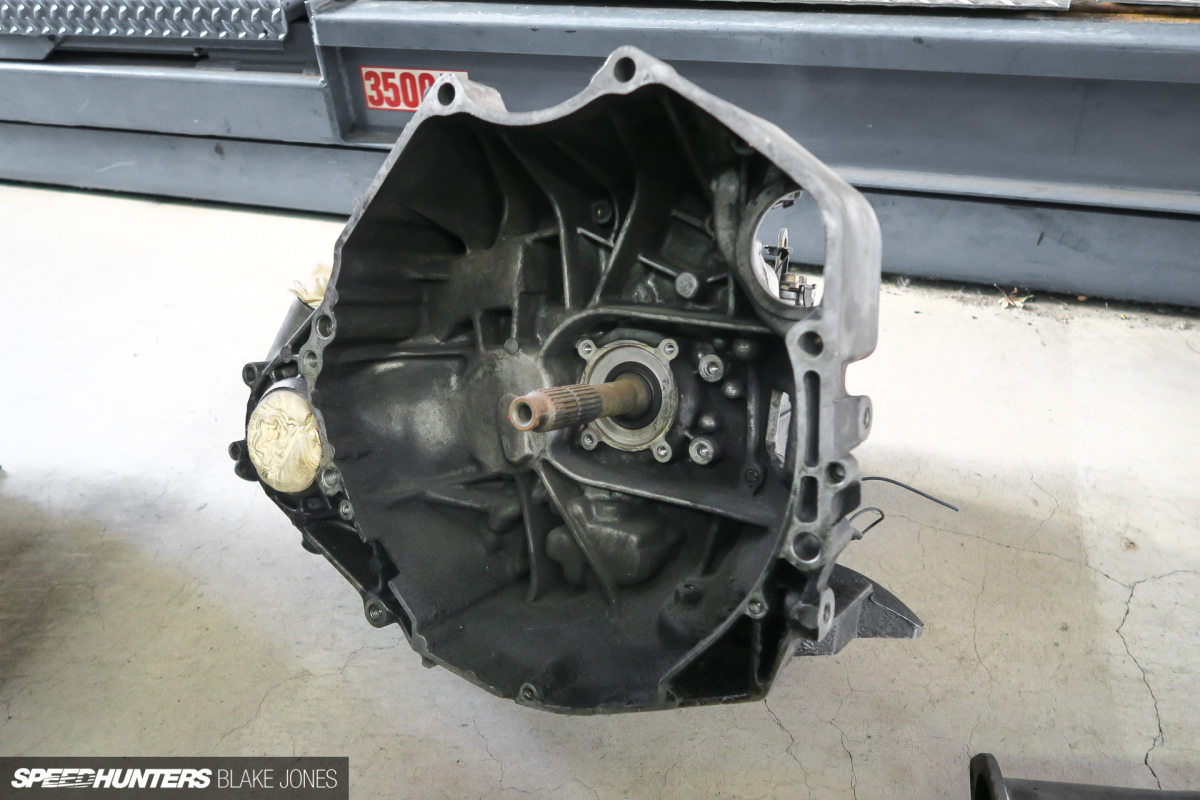
Used 5-speed boxes, on the other hand, come up for sale fairly often as a result of owners ‘upgrading’ to the 6-speed. Masa could source me a gearbox that he’d inspect and rebuild if necessary, and I’d be heel-and-toeing way before 2019. Now fair warning, the next two paragraphs are maths-heavy so skip ahead if that sort of thing grinds your gears.
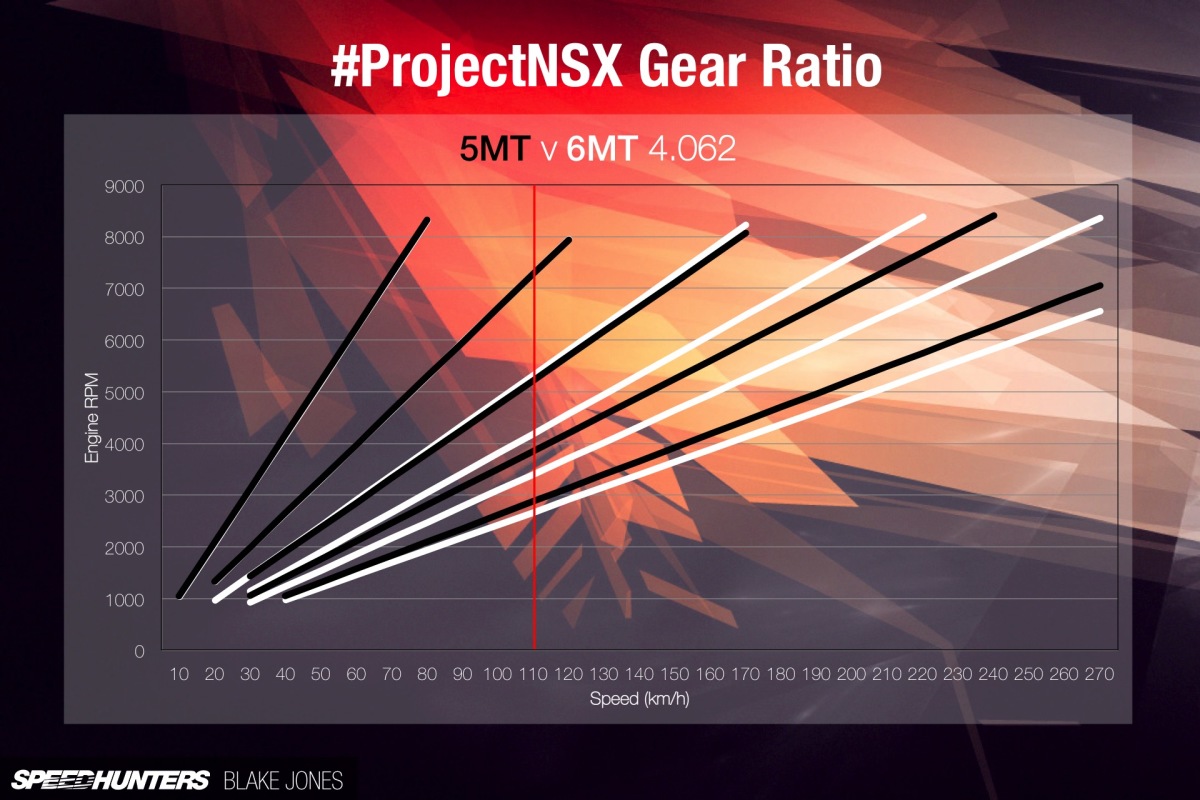
I was still a tad concerned about losing the extra gear, so did some investigation into ratios and what effect on driving I’d actually see. Again, the forums weren’t of much help since the gearing in US-market 5-speeds is longer than JDM, but thankfully the Japanese web has a wealth of info if you’re patient enough to wade through the poorly designed sites and dodgy translations. I wanted to visualize the difference between the 6- and 5-speed, so created the above chart based on factory provided gear ratios and a calculation based on tyre circumference. Most interestingly, you can see that the first three gears are almost identical, which means that acceleration from standstill is basically identical up to 170km/h (assuming maximum RPM upshifts). The extra gear in the 6-speed basically splits the difference between fourth and fifth in the 5-speed, which I’d imagine would come in handy on the race track. Top gear is also marginally longer in the 6-speed, meaning at highway cruising speed (110km/h for me, marked by the red line) engine revolutions are at 2,672rpm as opposed to 2,874rpm in the 5-speed. Both of these are a nice-to-have, but not a deal breaker for the 5-speed transmission in my opinion.

I also found it useful at this point to compare the difference between the 4.23 NSX-R spec final drive and the 4.4 race-spec ratio that cars primarily built for the track will use. Masa proposed I select the 4.4 for the most aggressive setup, but I was worried about the combination of 5-speed and short final drive on the highway. Your ring and pinion sits after the gearbox in the drivetrain and, by installing a quicker (or slower) ratio, you can effectively shorten (or lengthen) all your gears by the same ratio. It’s basically a trade off between acceleration and top speed; as you can see, the shorter final drive has the effect of shifting all the gears to the left of the chart. At 110km/h, that meant turning 2,874rpm (stock/4.062), 2,996rpm (NSX-R/4.235) or 3,113rpm (race/4.4).
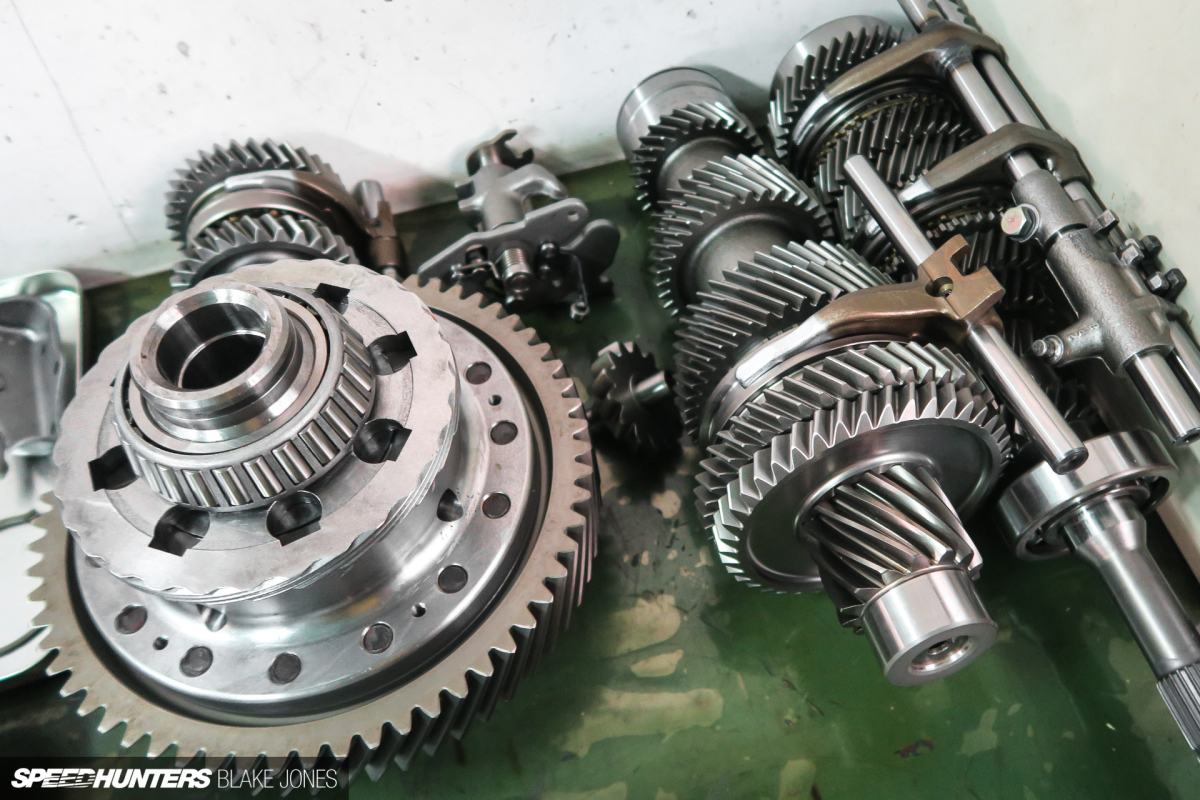
The conclusion was two-fold. Firstly, my ‘goldilocks’ setup would be the 6-speed with 4.4 ring and pinion – short and snappy, but with the slightly longer top gear maintaining a sensible highway RPM. Secondly, the 5-speed with the NSX-R-spec 4.235 ring and pinion would provide a more than acceptable compromise between acceleration and highway cruising. Thus, considering the wait for a new 6-speed box, I decided to go with the 5-speed, knowing that down the track I could always upgrade to the 6-speed.
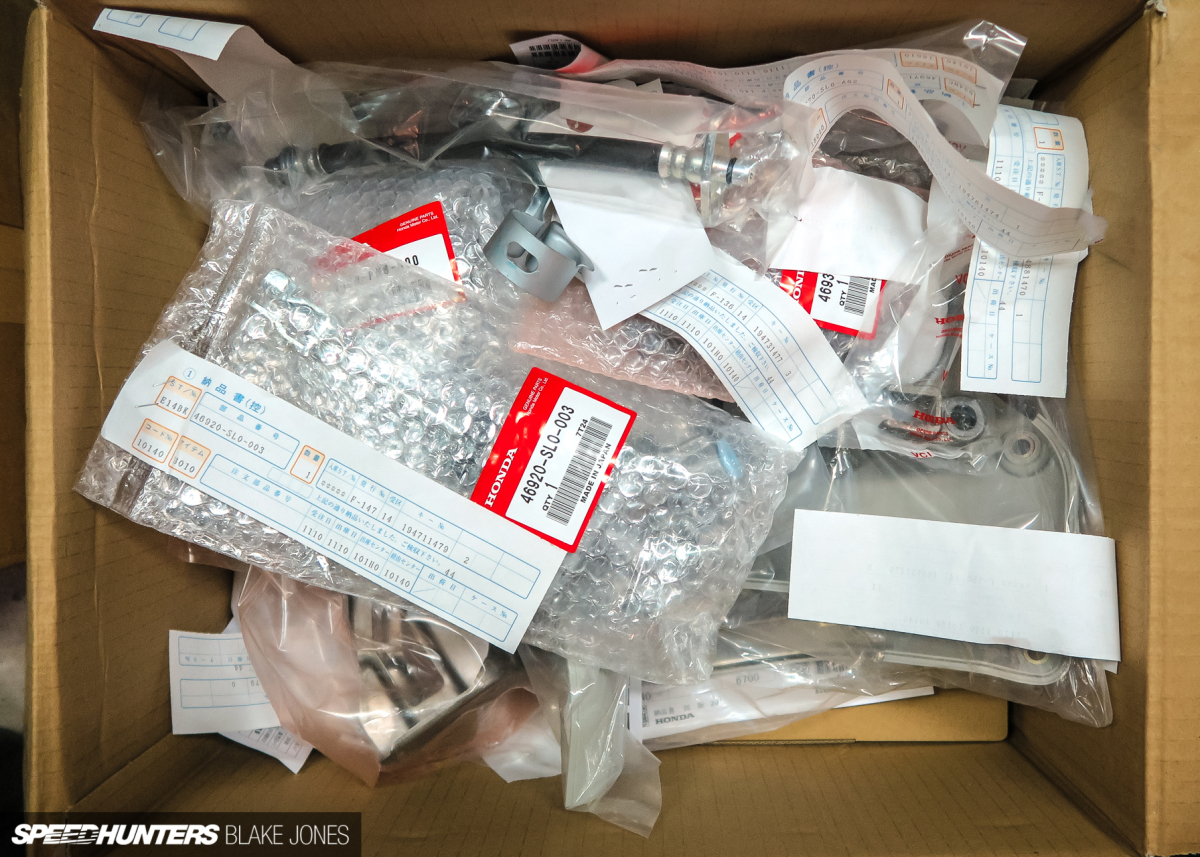
Masa made the appropriate phone calls and soon boxes of parts began to arrive from Honda.
CHAPTER THREE
NSX-R With A Dash Of Aftermarket Performance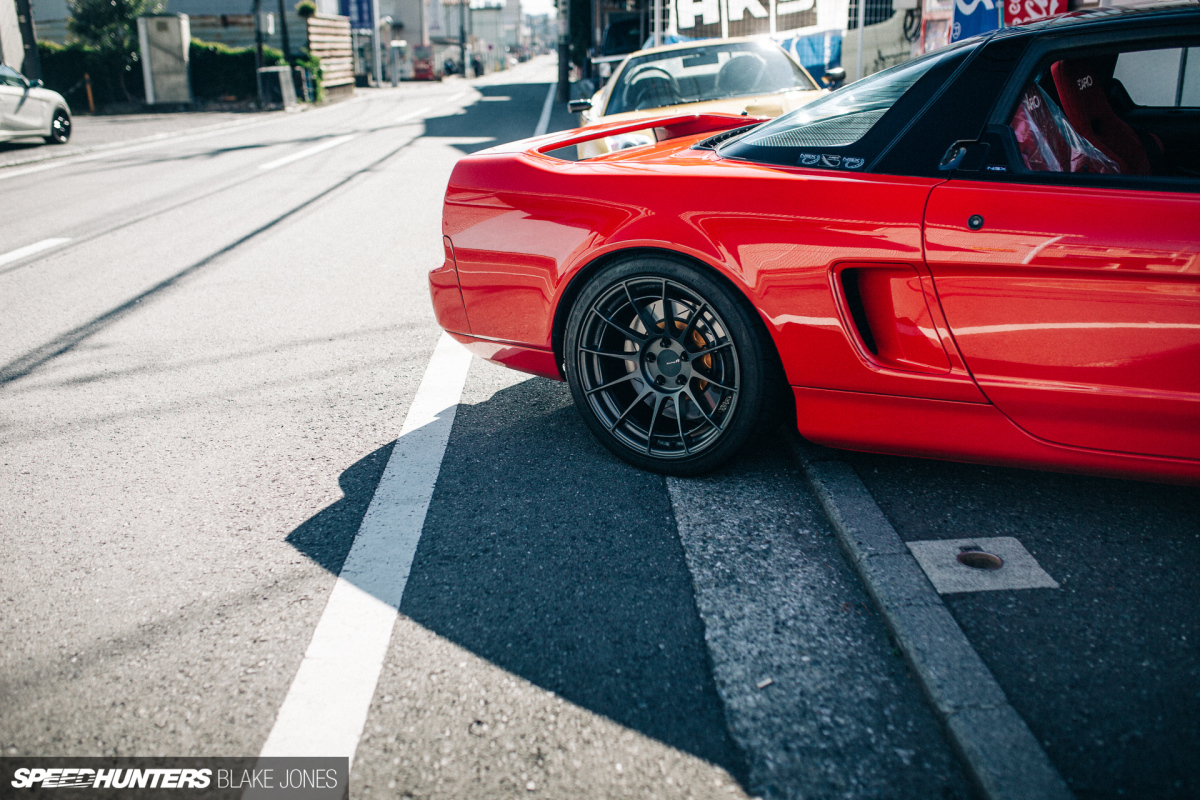
When Honda released the NSX it promised to support the model for as long as possible to encourage owners to drive the cars long and hard. The theory is, profit could be made over the life of the car as opposed to just at sale, and the more cars out and about, the greater the halo effect for the brand. A great mentality and a result many parts are either still in production or stockpiled, including those for the extremely rare NSX-R models. You need to provide Honda with a unique NSX-R identification number to procure these parts, but it’s blatantly obvious that most of these parts are ending up on ‘regular’ NSX’s.
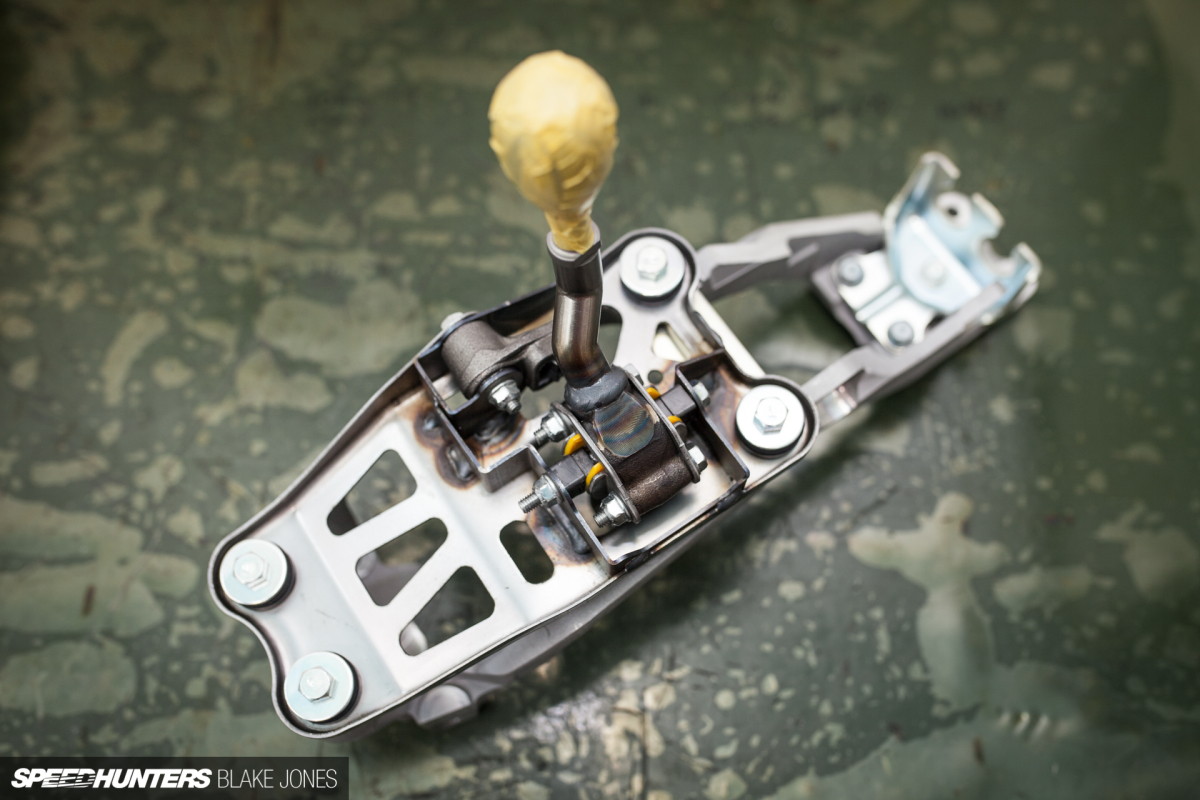
Despite what you might expect NSX-R parts aren’t outrageously overpriced, so it was an easy choice to spec the lighter and shorter throw titanium shifter…
Stiffer and lighter engine mounts…
And shorter NA1 NSX-R clutch pedal and complementary brake pedal assembly (RHD only, sorry American friends).
Some parts are common between the standard manual and the NSX-R, including clutch master cylinder and reservoir, intermediate shaft, driveshafts and shifter cables.
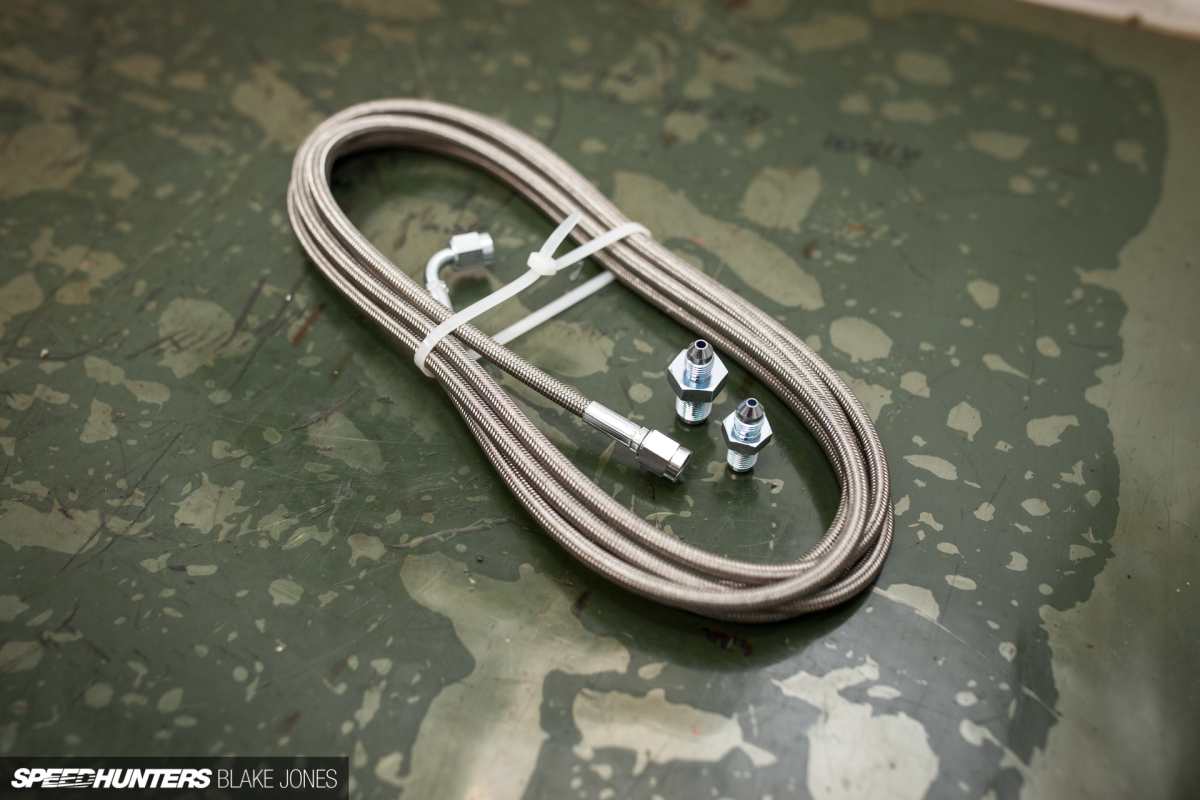
To circumvent the tricky and time consuming process of installing original clutch hard lines, Racing Factory Yamamoto has created a braided line that takes minutes to install instead of hours.
This box travelled all the way from Science of Speed in Arizona; the reasonable price and strong user feedback for their Sport 275 clutch and flywheel kit won me over. The factory manual came with a twin-plate unit, but this single plate is simpler and as a result carries 5kg less rotating mass. If I needed any more convincing, the NA2 6-speed update ditched the twin-plate for a single-plate unit.
The ATS Carbon LSD came highly recommended from Masa for providing nice lock-up characteristics and silent operation; the Advance shop NSX runs the same unit.
FINAL CHAPTER
Bye-Bye AutoWork started in the assembly room where the donor box was pulled apart, cleaned, inspected and reassembled. I’m sure this is a fairly involved process, but by now Yagi has rebuilt more NSX gearboxes than I’ve had hot lunches, so he makes it look easy.
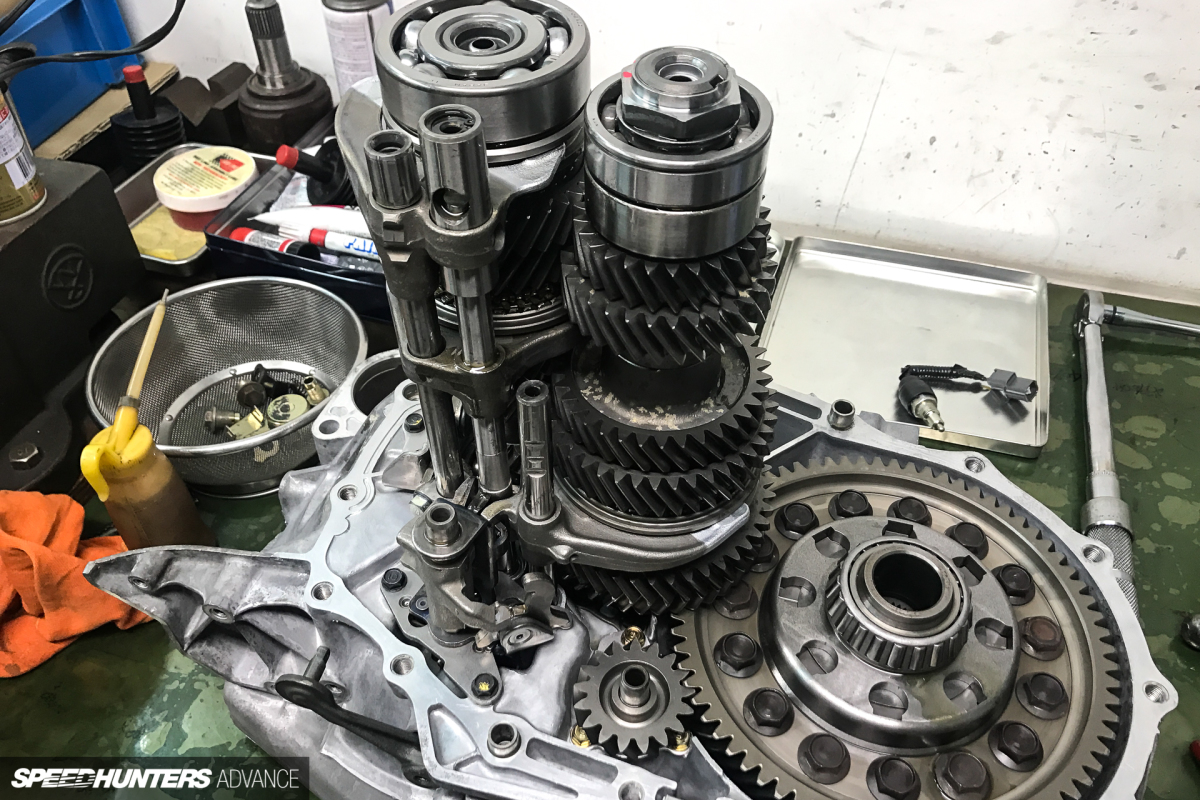
Here’s the reassembled gear-set in all its glory before the case is slid back into place.
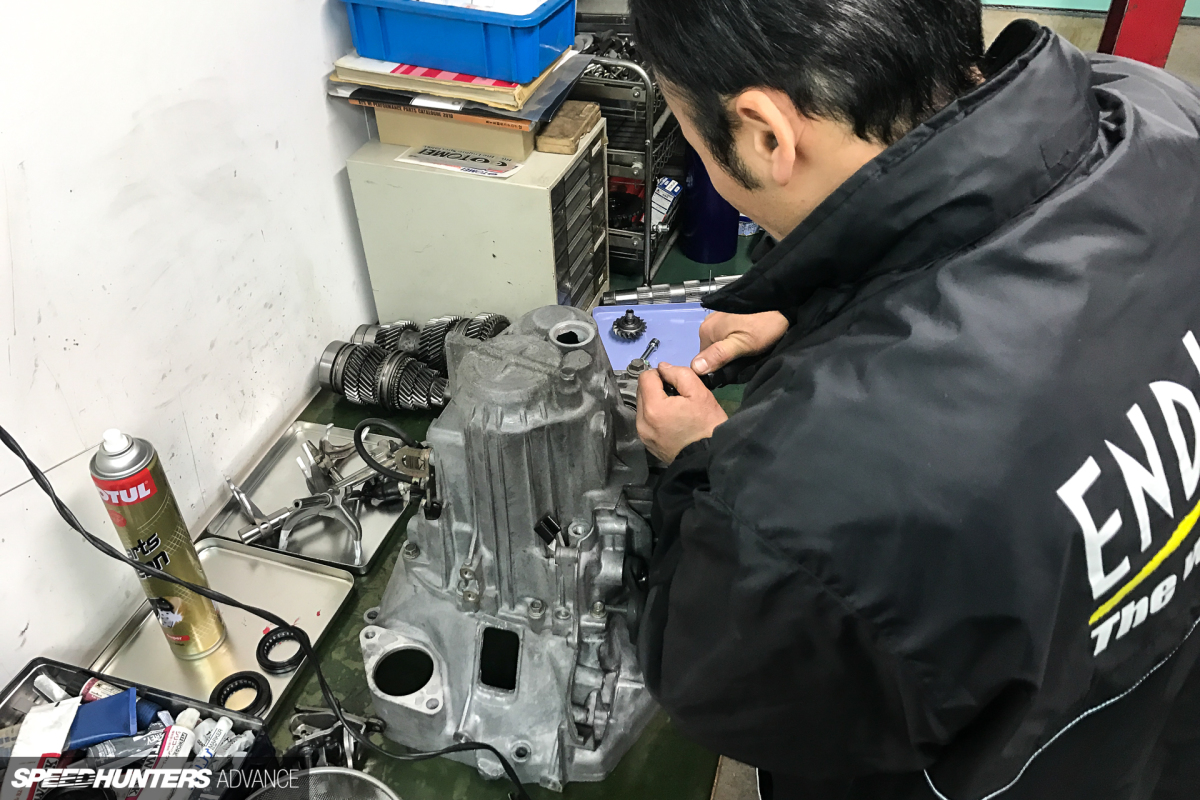
A certain range of early gearboxes are susceptible to a defect known as snap ring failure, so Yagi also verified that this gearbox wasn’t one of the affected units.
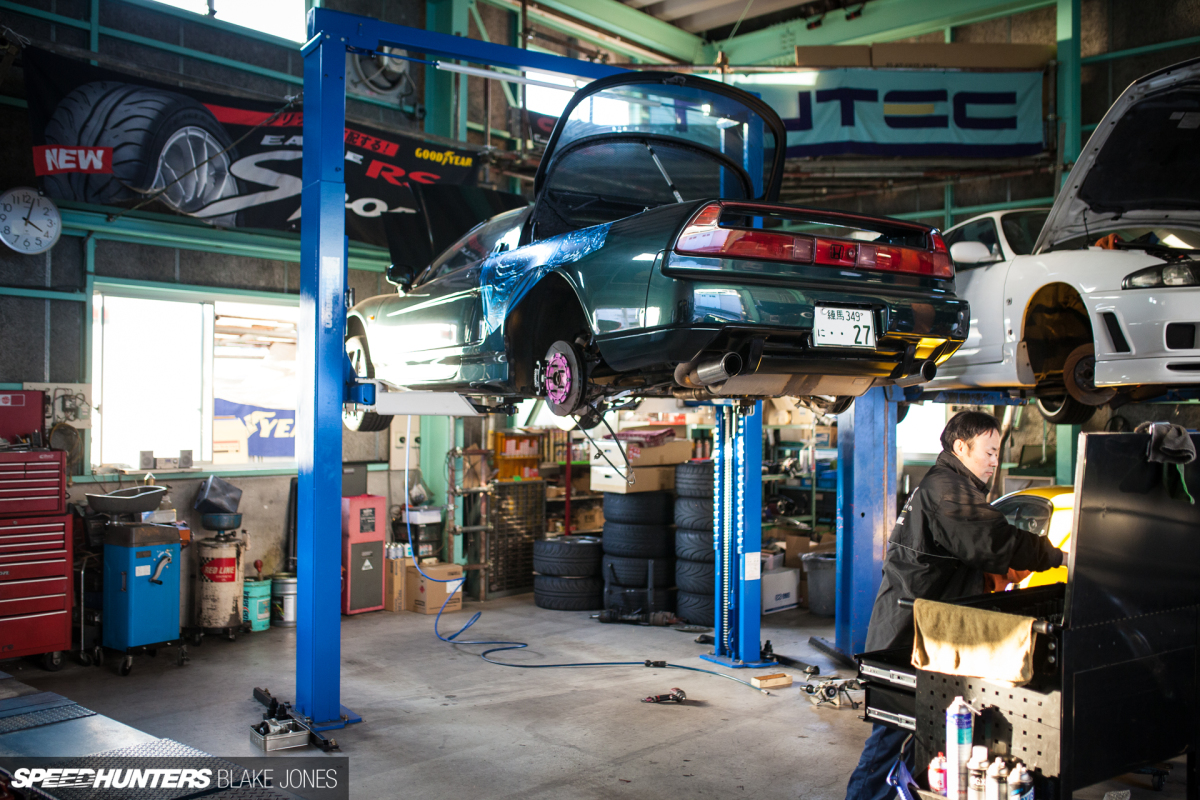
Meanwhile the car was up on one of the shop’s many lifts waiting for the operation.
The rear subframe had been removed earlier, so all that was left for Yagi to do was disconnect the driveshafts (which as you can see from the oil stains were in need of replacement boots) and remove the large mounting bolts holding the box in place once it was supported on a hydraulic jack.
With a bit of careful prying to seperate the bell-housing from the engine, Yagi lowered the automatic transaxle down and out of the car’s underbelly.
The auto box is a beast. Being at least 25kg heavier than the manual unit, all the strength that Masa and Yagi could muster was required to get it onto a trolley. Anyone need a 74,000km automatic NSX gearbox? Call me…
By the next time I stopped by the shop, more and more parts were coming out of Project NSX, most notably the automatic shifter. The control unit for the automatic transmission was discarded of as well.
Yagi had removed the centre console to install the NSX-R shifter, and can be seen here removing the leather trim that conceals the car’s electronics mounted to the cabin side of the firewall. This was done to make small wiring changes in order for the reverse light to illuminate with the new gearbox.

Installing the pedals might seem like one of the simpler parts of the swap, but it requires removal of the steering column which is time consuming work. That clutch master cylinder we saw earlier bolts right up to the factory mounting point.
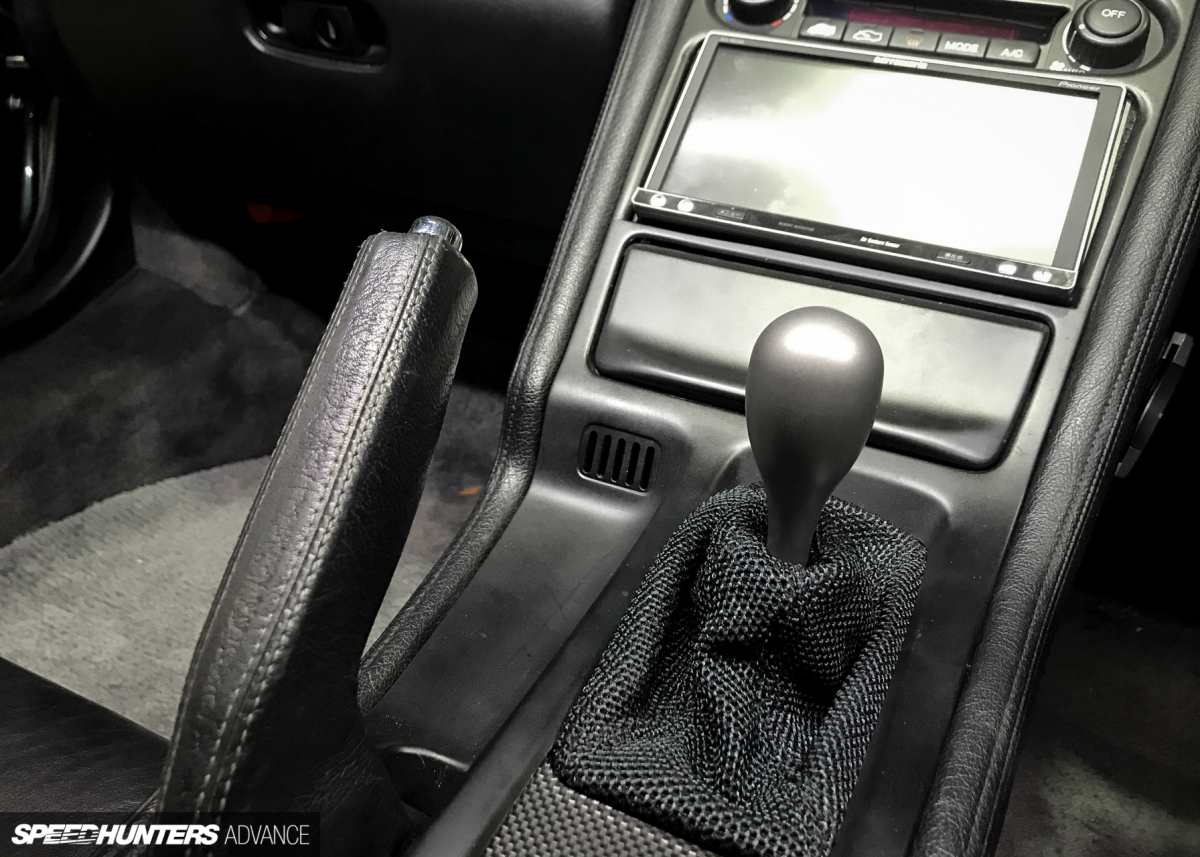
Even within the line-up of factory NSXs there are several variations of shift knob, but the NA1 NSX-R titanium knob with NA2 NSX-R lightweight mesh boot was the combination I went for. Not only does it look great, it’s the lightest setup available (every gram counts on the touge).
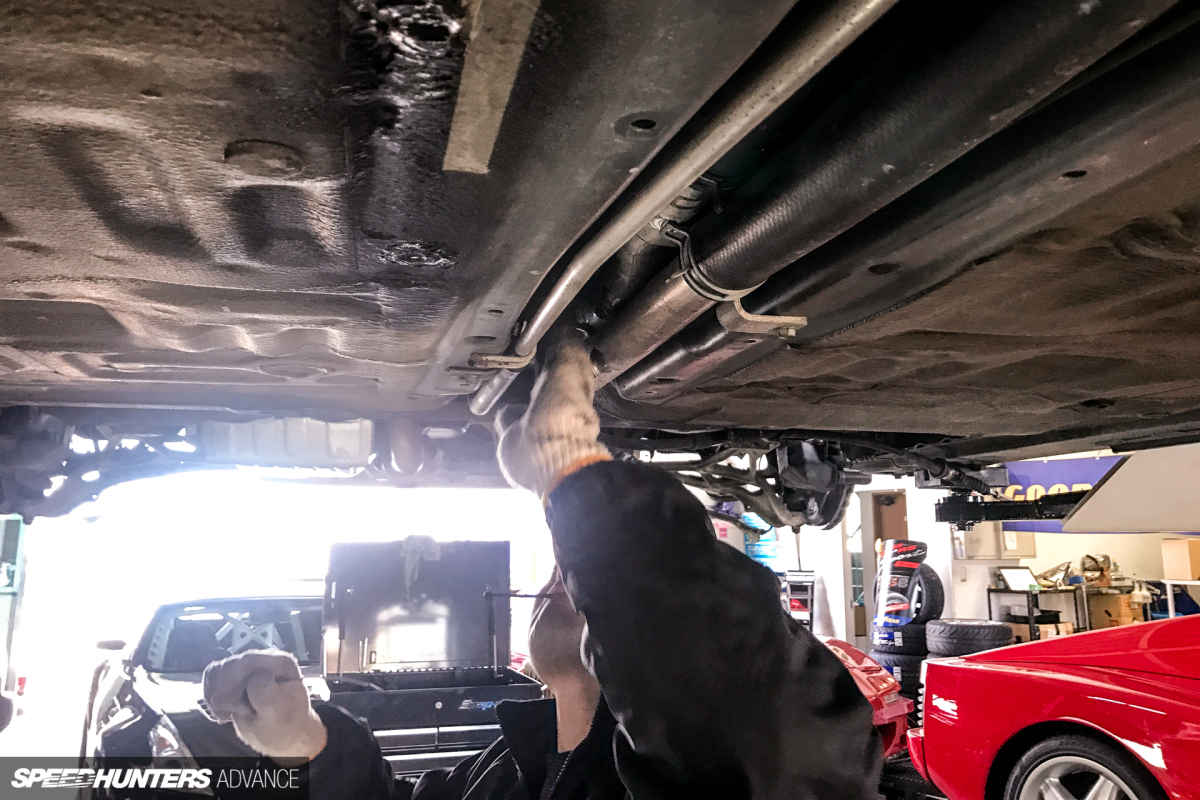
Next was to run the RFY braided clutch line to the rear of the car.
The clutch itself is a straightforward job to install – at this point the converted car and a factory manual are effectively identical. This Science of Speed unit has been well reviewed for maintaining a pedal feel similar to stock, and without any sort of forced induction planned there was no need to go for one of their heavy-duty options.
My next visit to check on the progress was a week later, by which stage the swap was effectively complete. I was really enjoying checking out all the brand new Honda bits that – obviously – looked right at home under Project NSX. Nothing beats OEM.
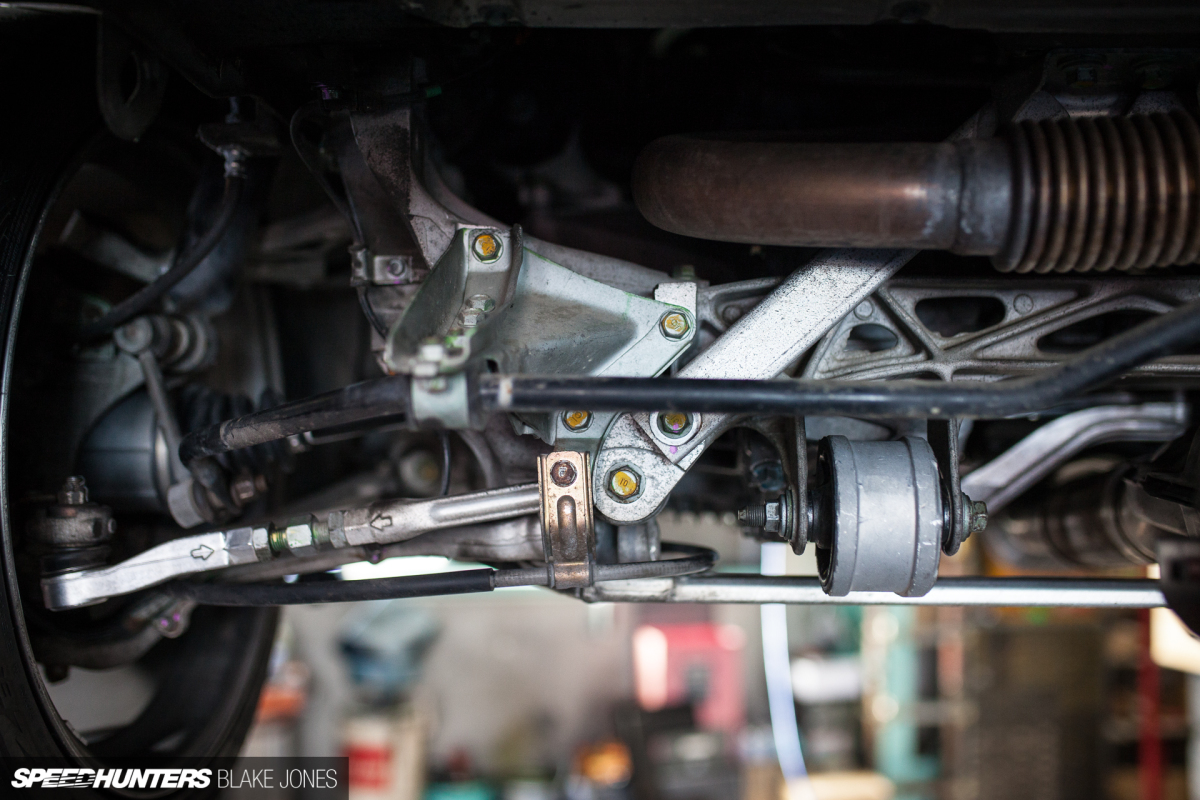
It was also a great opportunity to check out that famously intricate rear suspension in all its glory without the large stock muffler in the way.
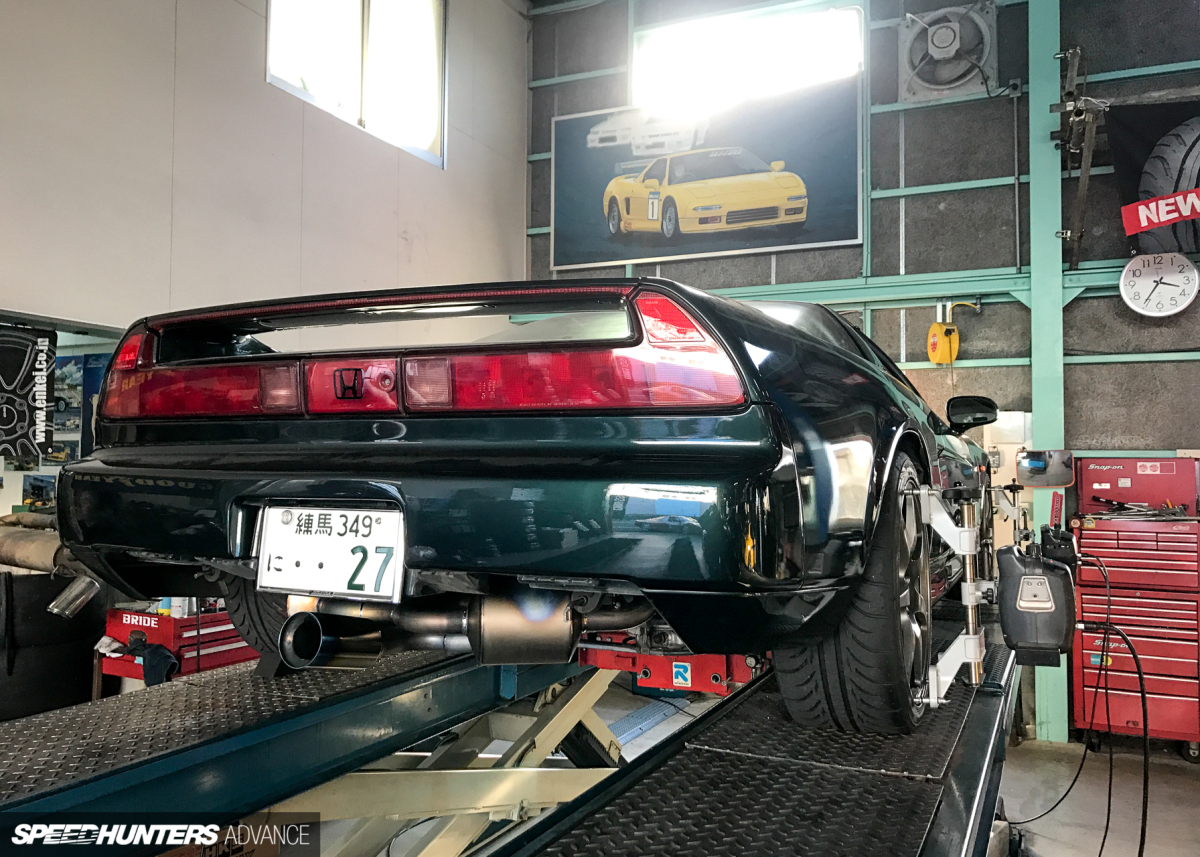
Seeing as the rear subframe had been removed for the work, the final job was an alignment to Advance’s road specs.
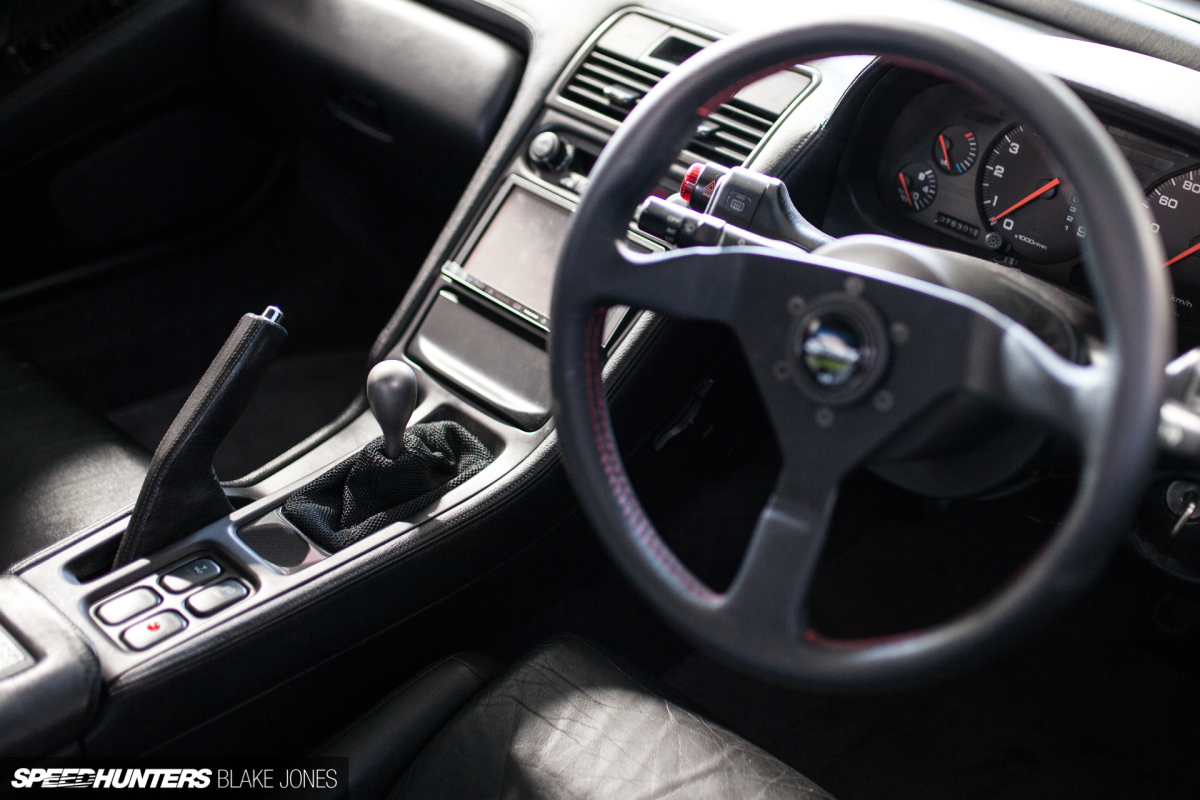
Although the transmission swap is complete, the car is not yet completely identical to a car that left the Tochigi plant as a manual. Early manual cars had a fully manual steering rack without power assistance, whereas the automatics received an electric power steering box. In 1995 this became standard for manual cars too; it’s an effective and communicative system that negates the NSX’s heavy steering in tight corners and also gives an edge on the limit of adhesion (where the NSX is notoriously difficult to save from a spin).
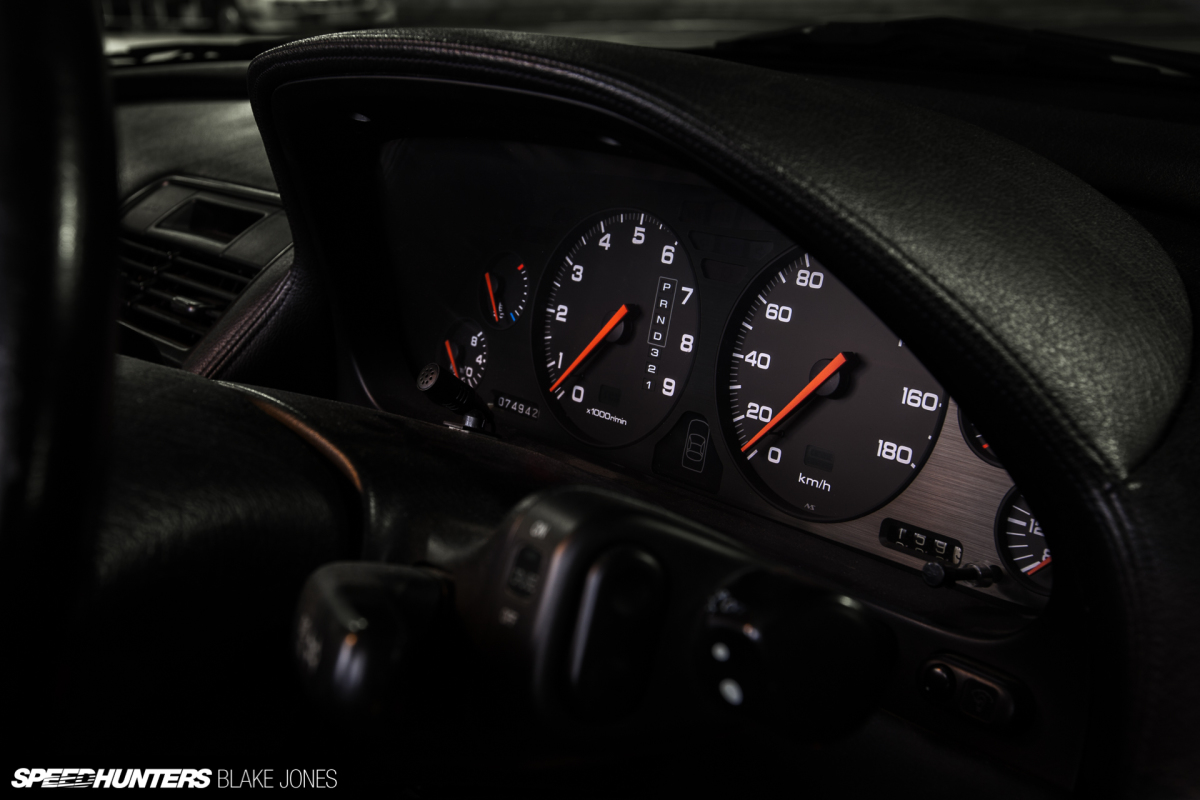
There’s also the small matter of the gauge cluster, which for now retains the automatic’s gear selection indicator. I’m currently investigating a solve here, which you’ll read about in a future story. Perhaps most importantly from a performance perspective, the engine is in a slightly different state of tune. The automatic cars received a different camshaft profile and engine map which boosted torque low down but sacrificed about 18hp at the top end. Installing headers can make up this power deficit, but I think Project NSX is deserving of some properly aggressive camshafts. What do you think?
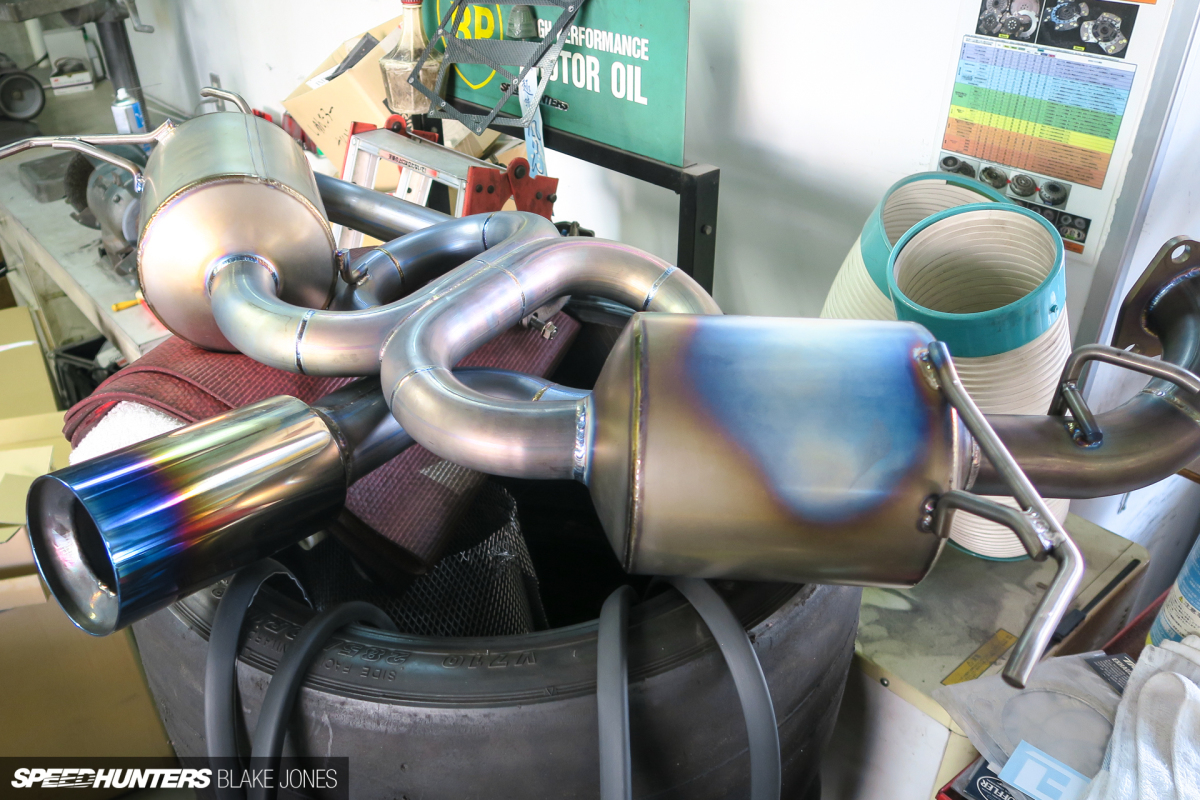
If you’ve been paying any attention I’m sure you’ve noticed that the twin-tip exhaust is no more, but this post has gone on long enough. Stay tuned for more on this shiny piece of titanium and a review of the new driving experience in the next update.
Blake Jones
Instagram: blaketjones
blake@speedhunters.com
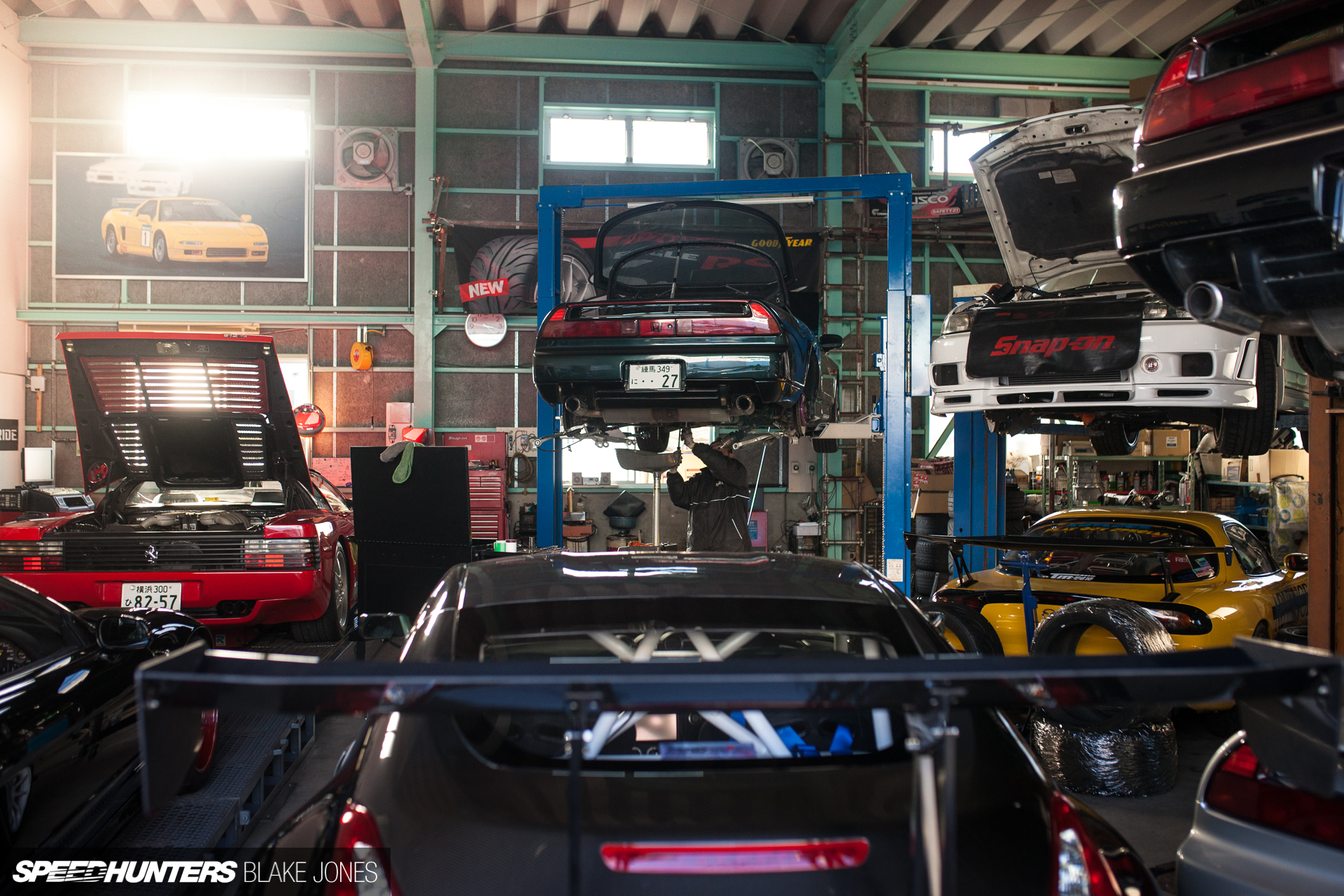









































































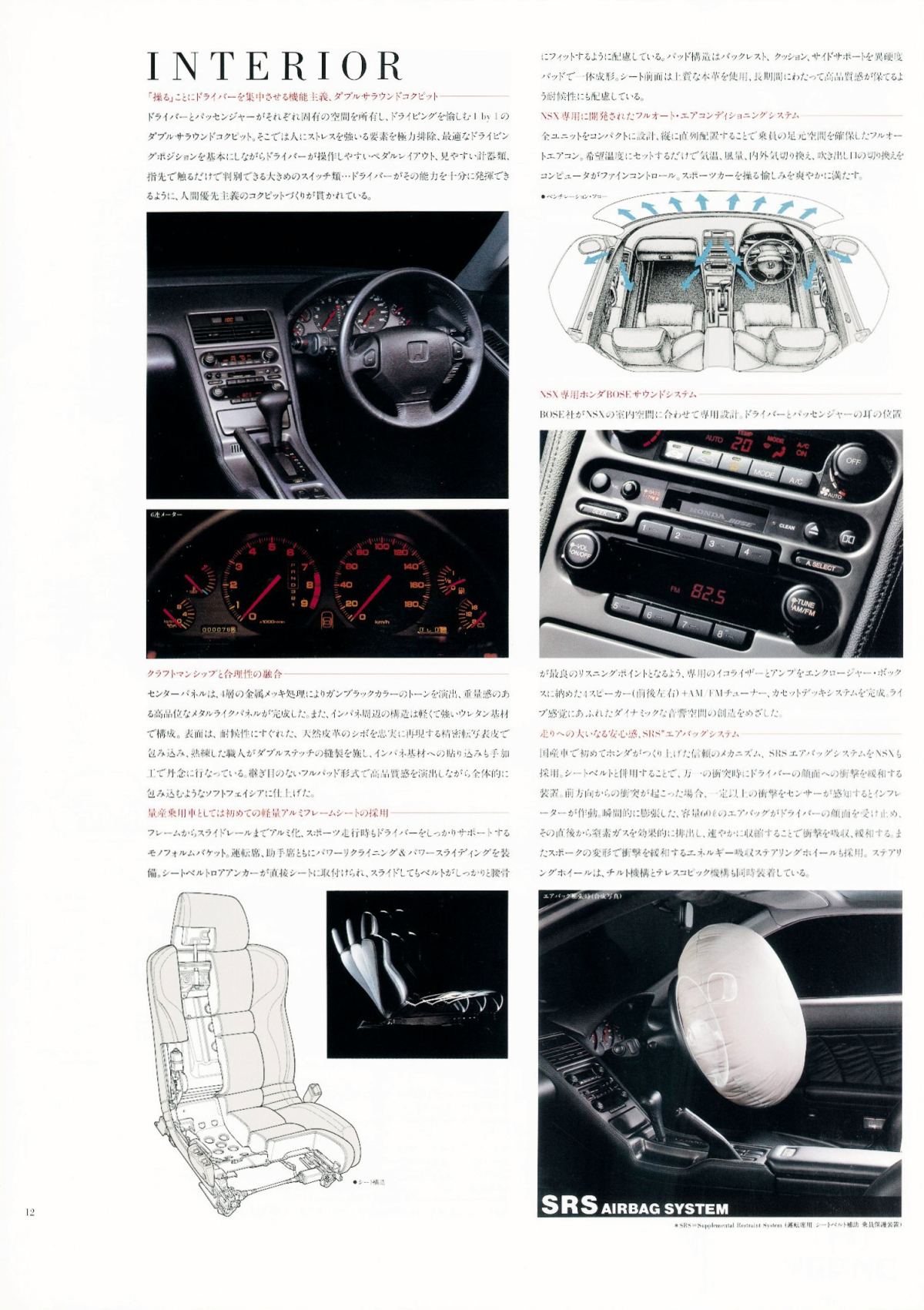

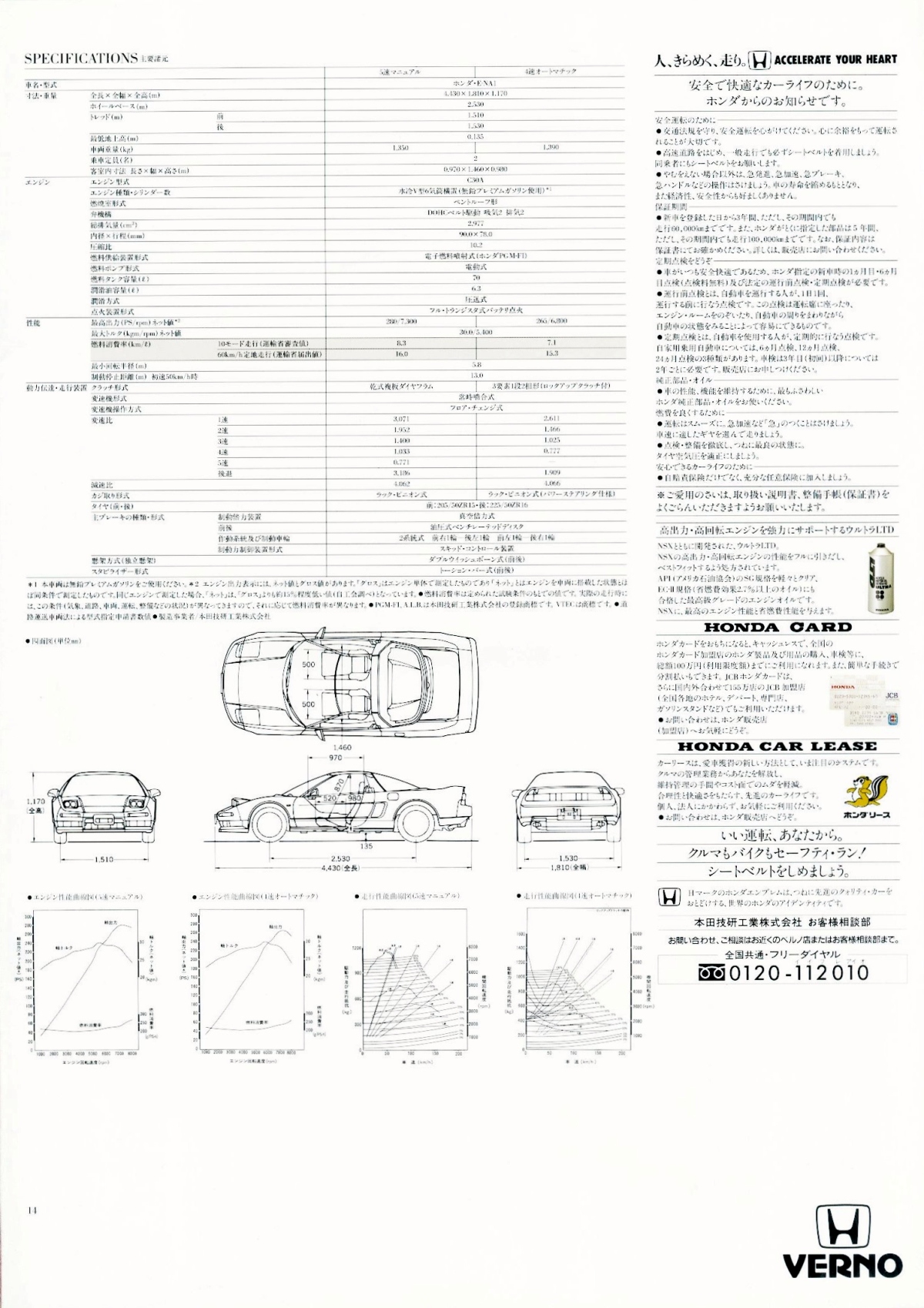
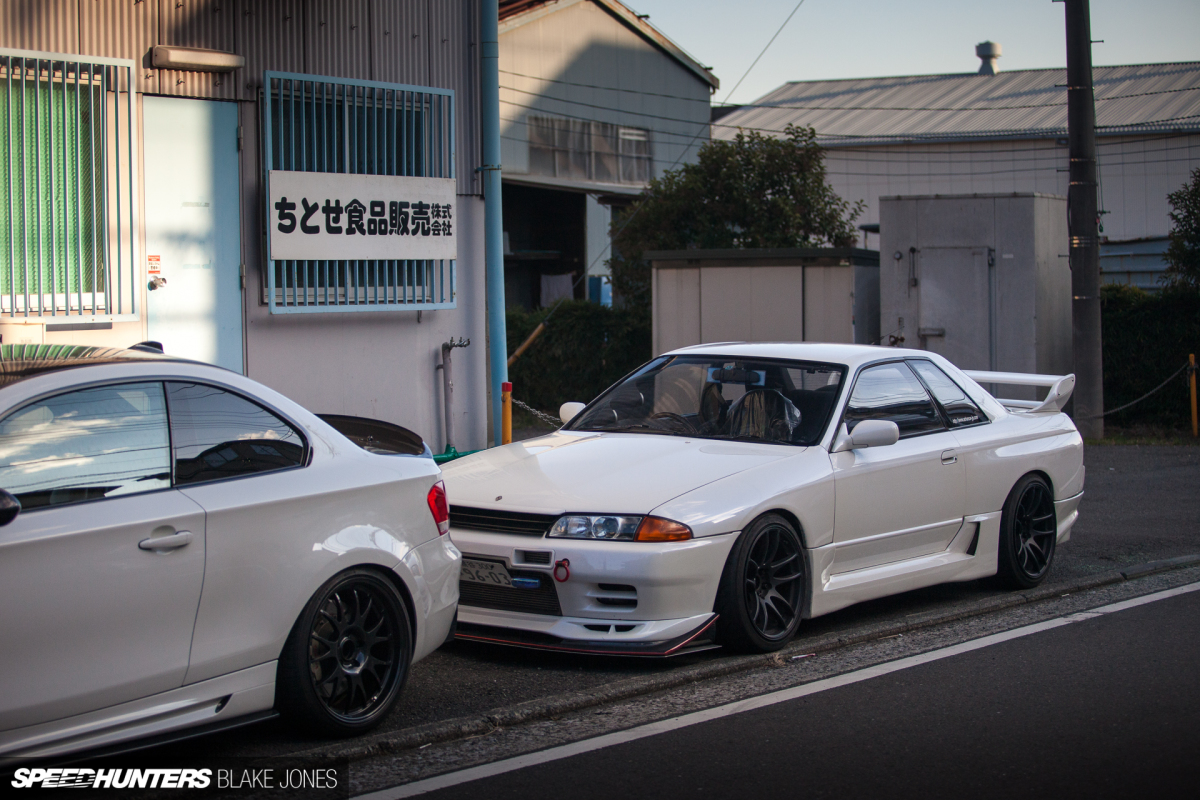
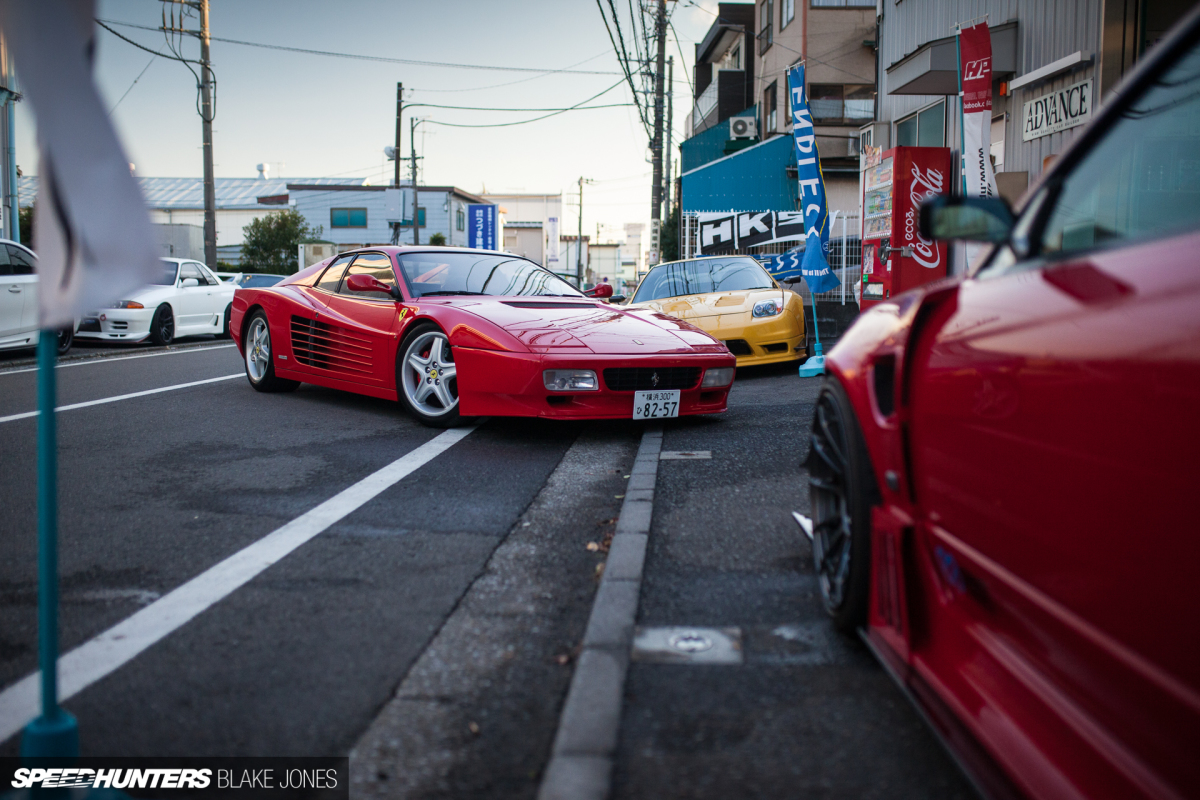
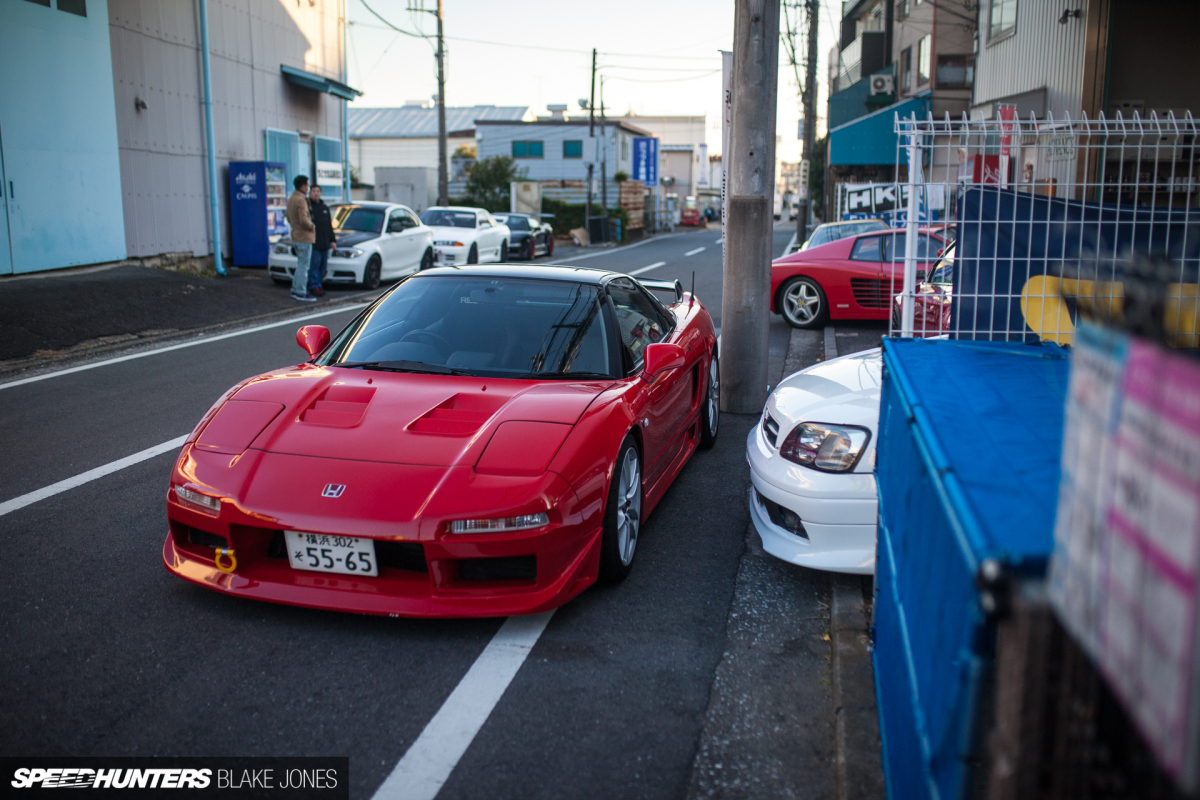
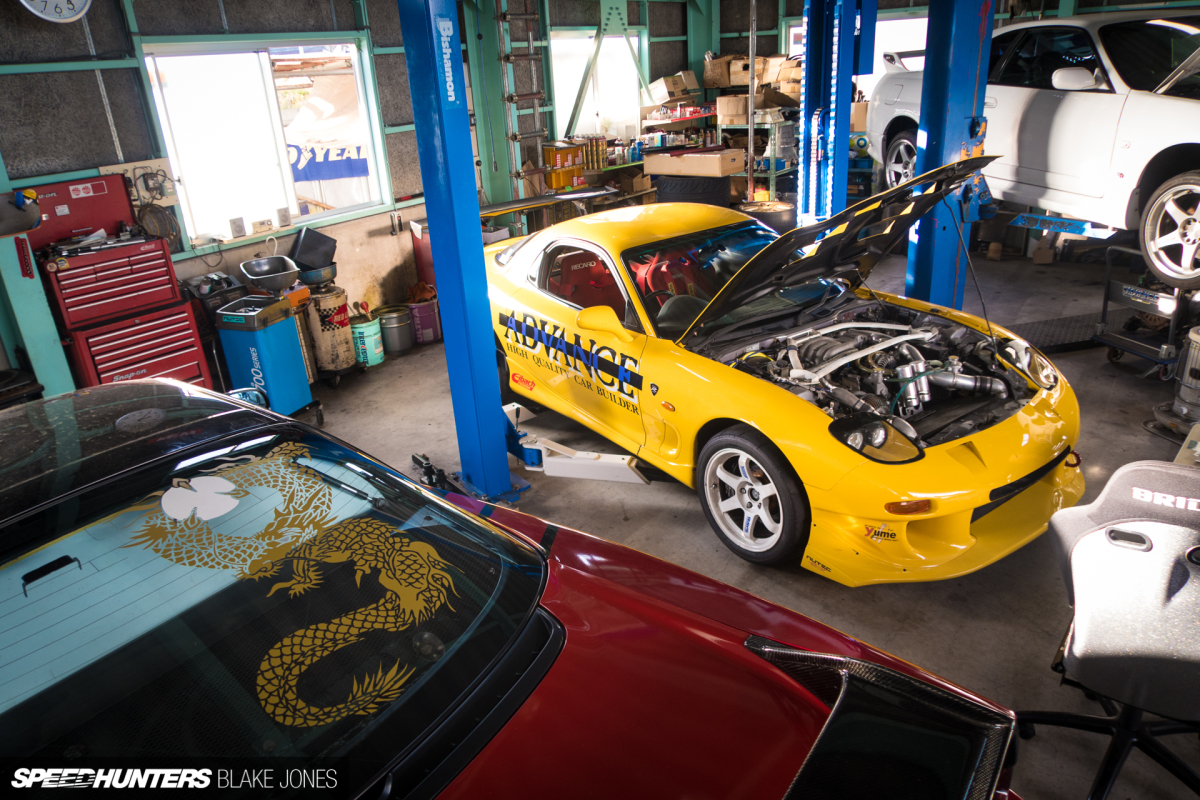
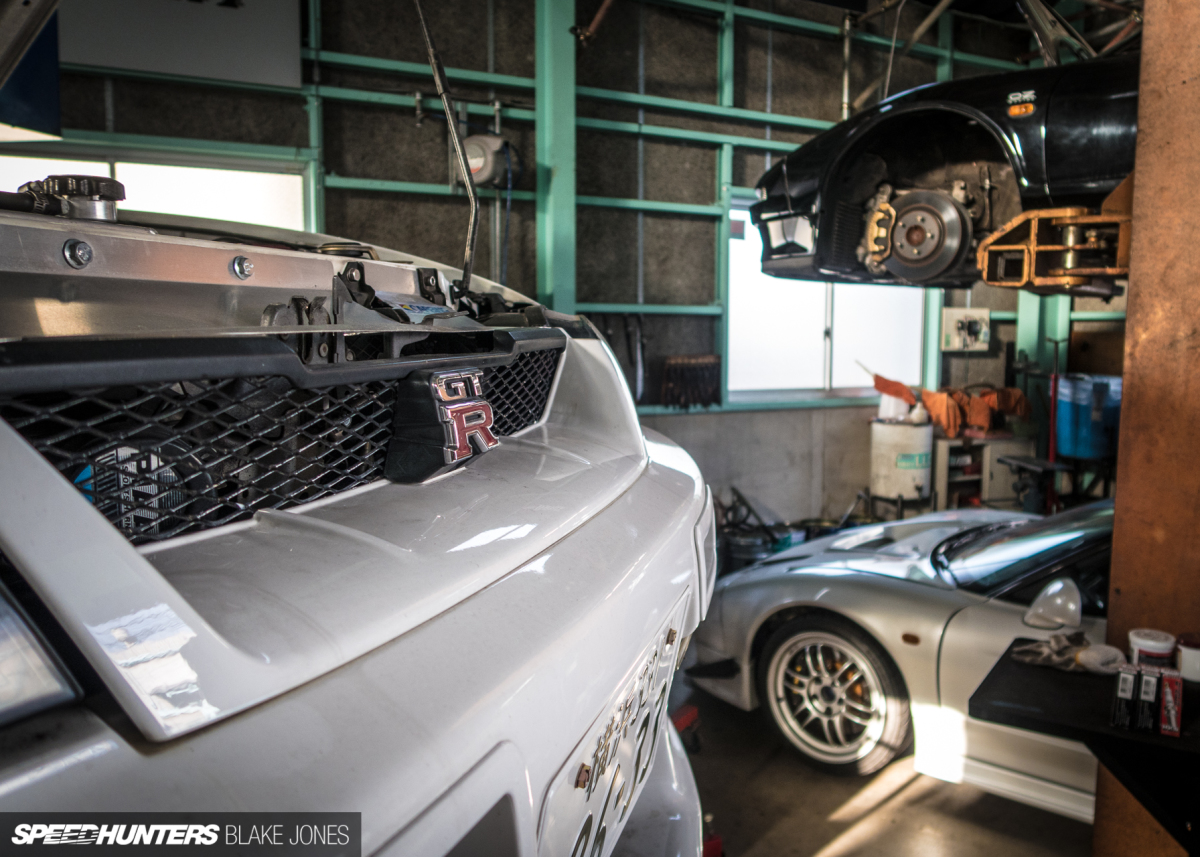
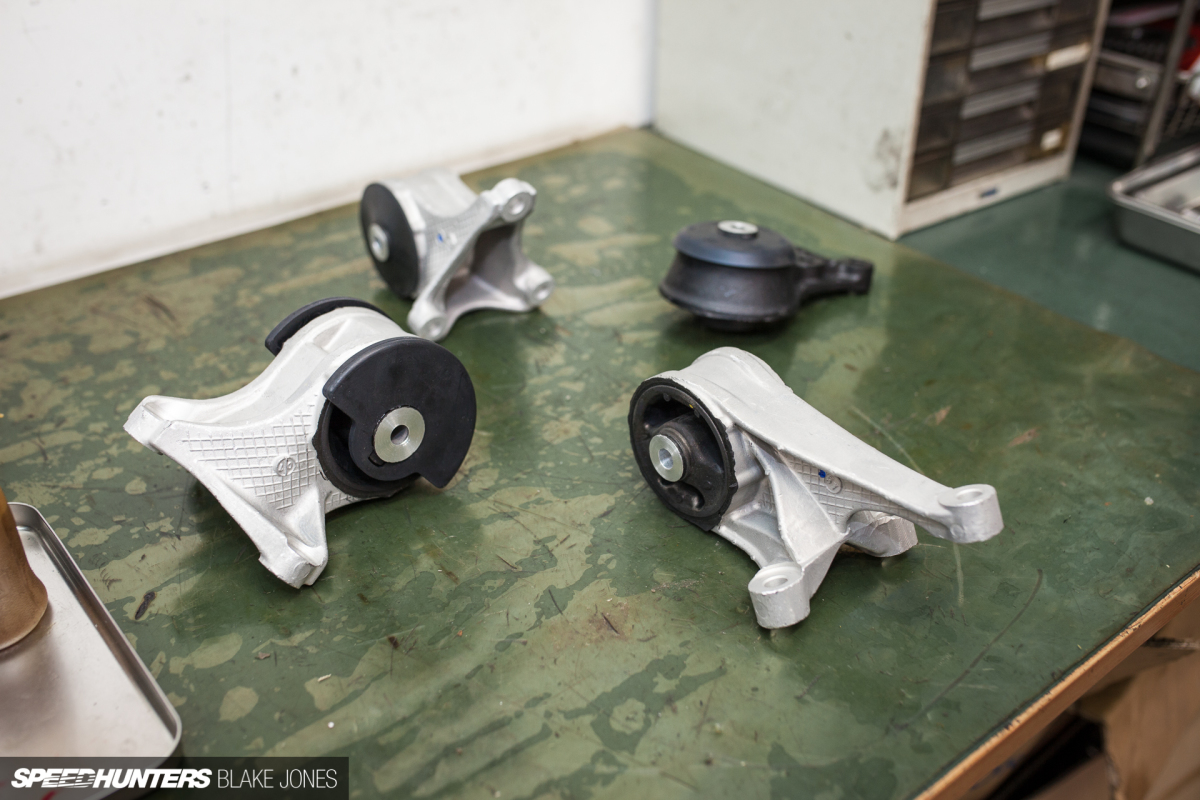
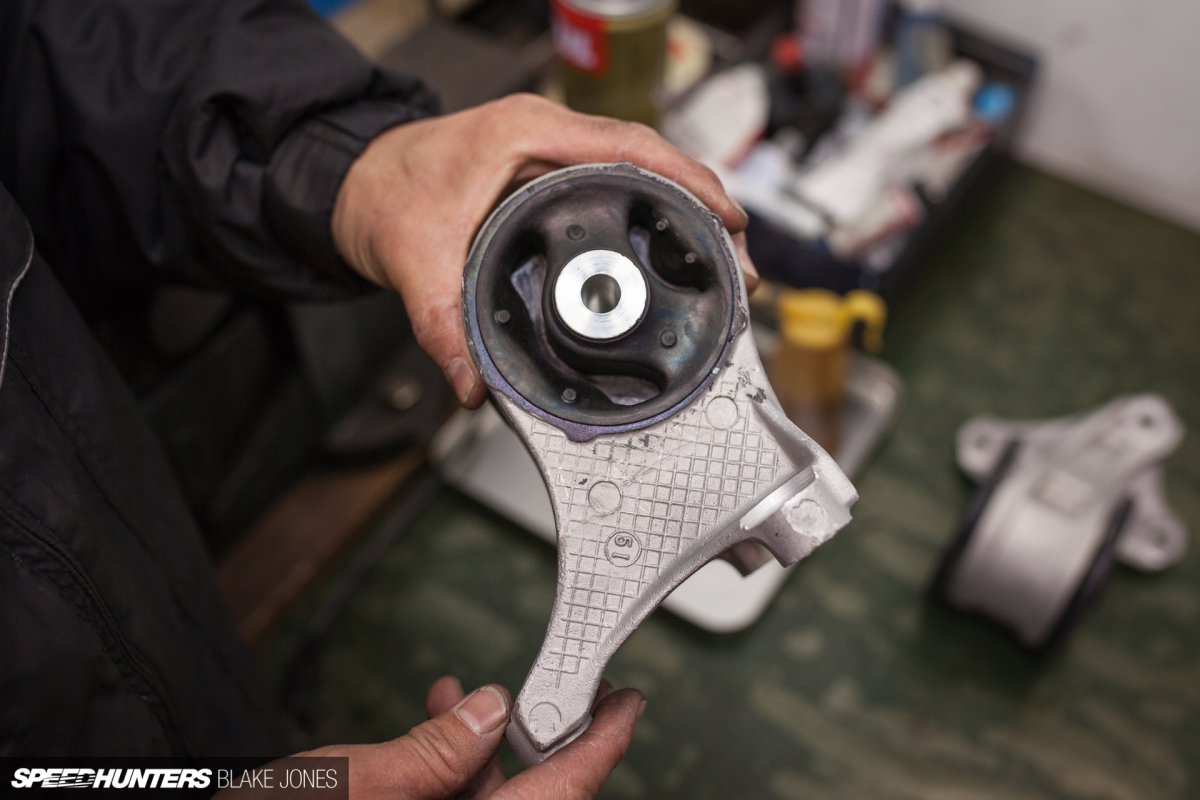
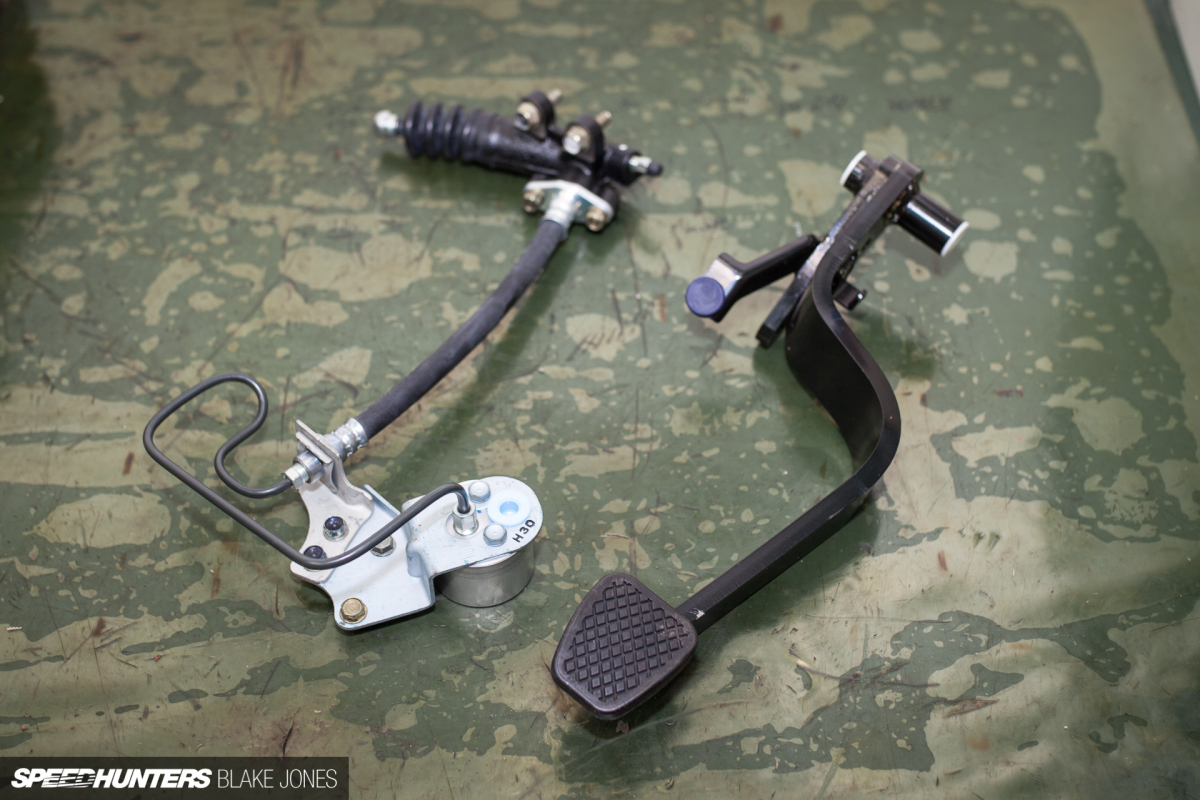
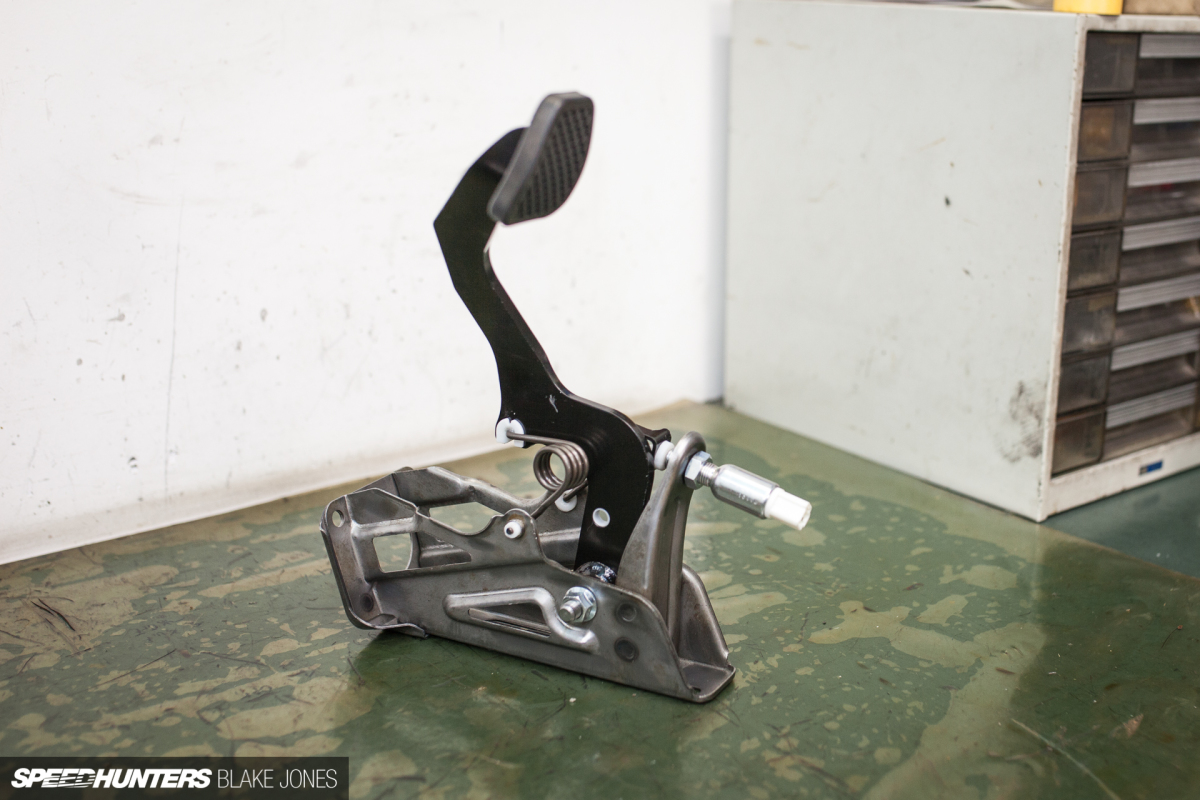
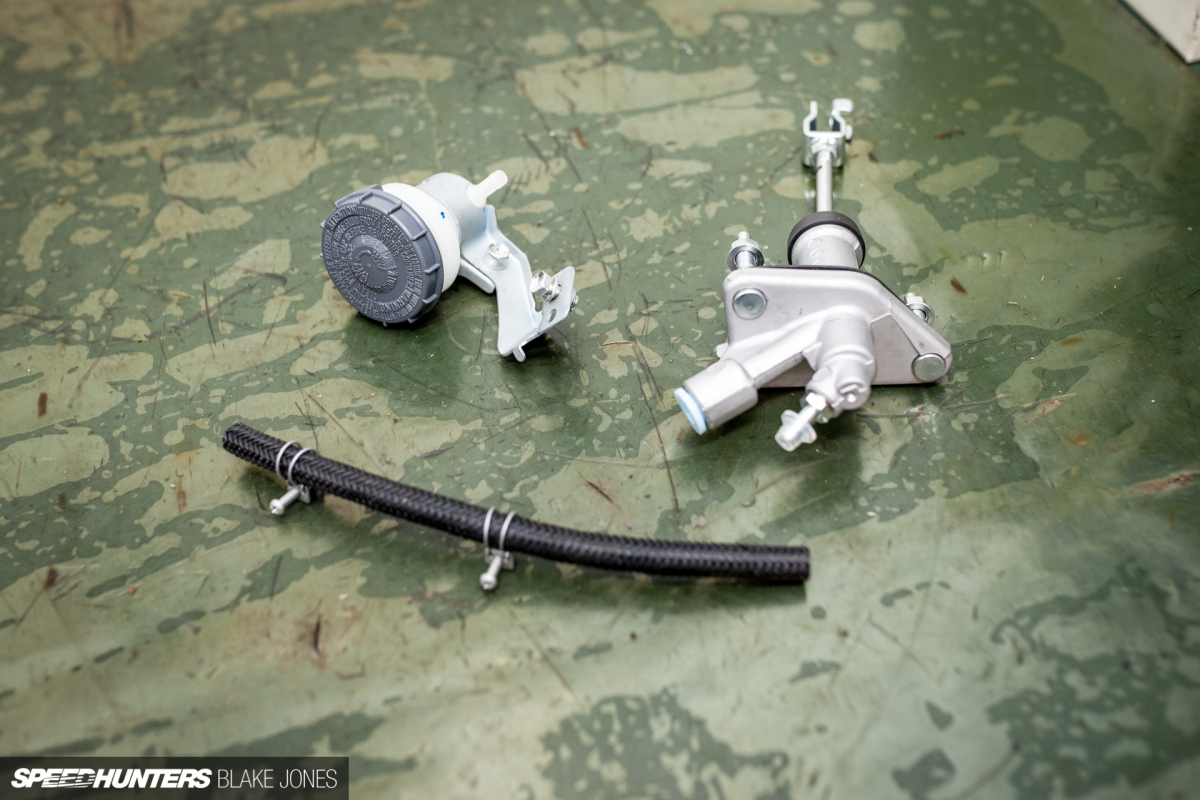
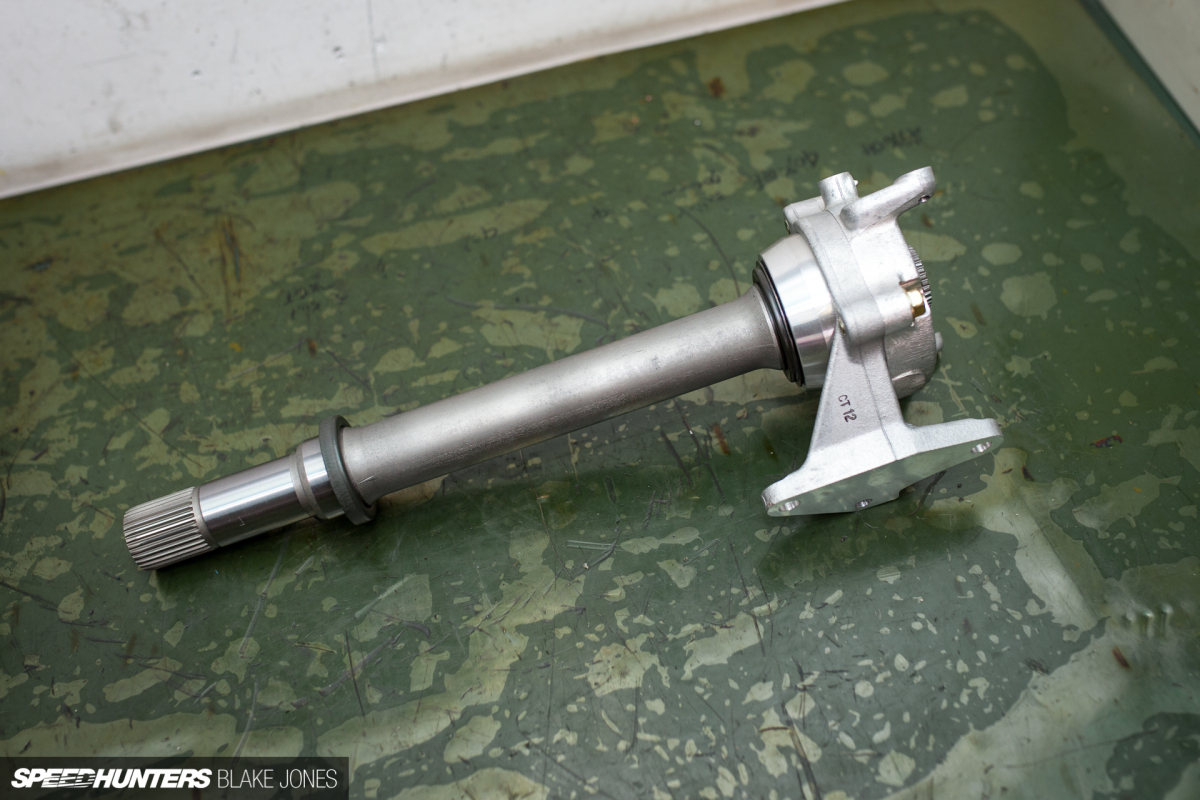
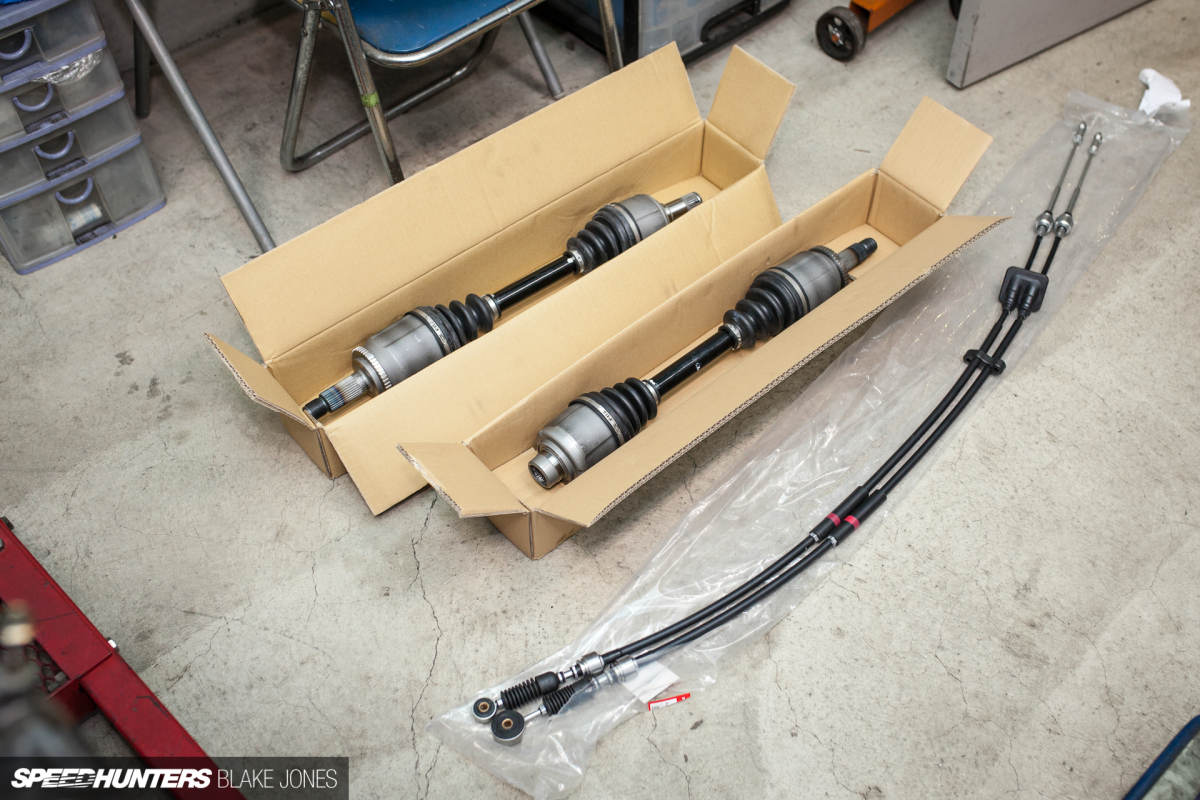
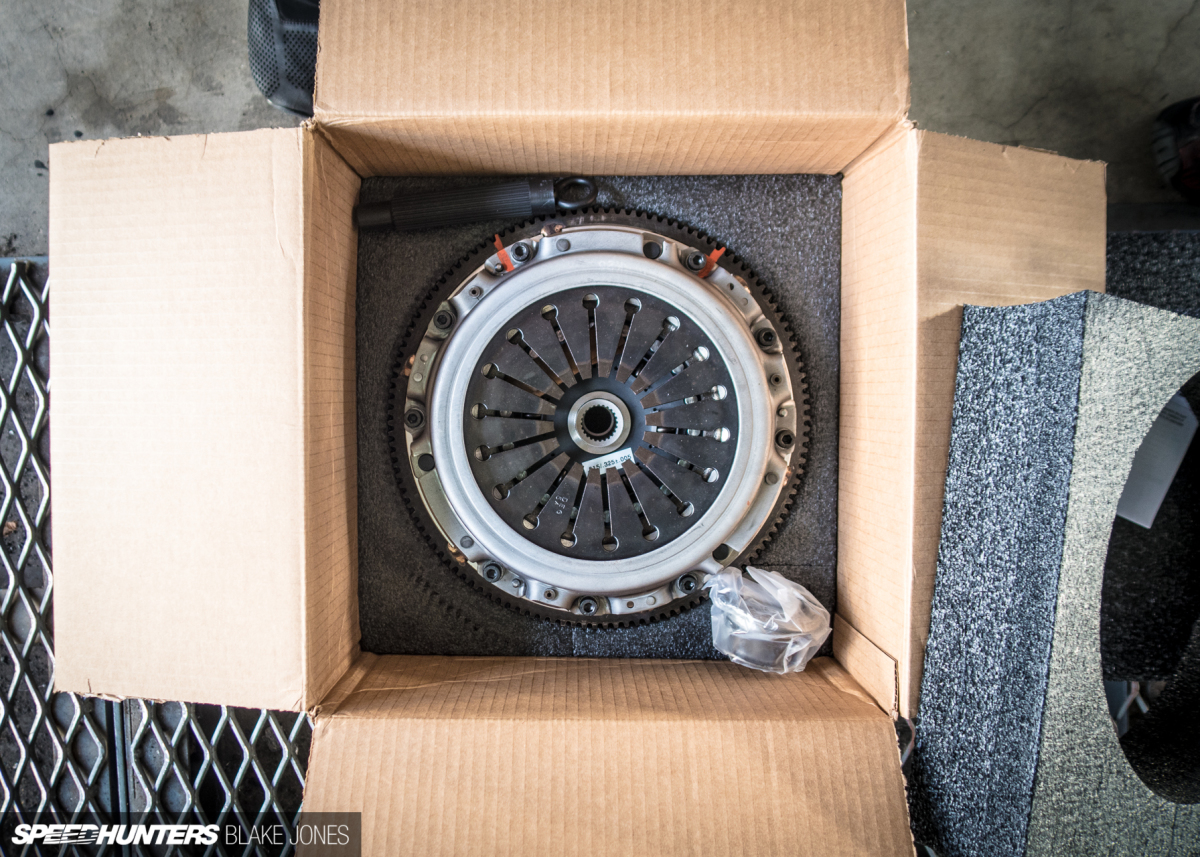
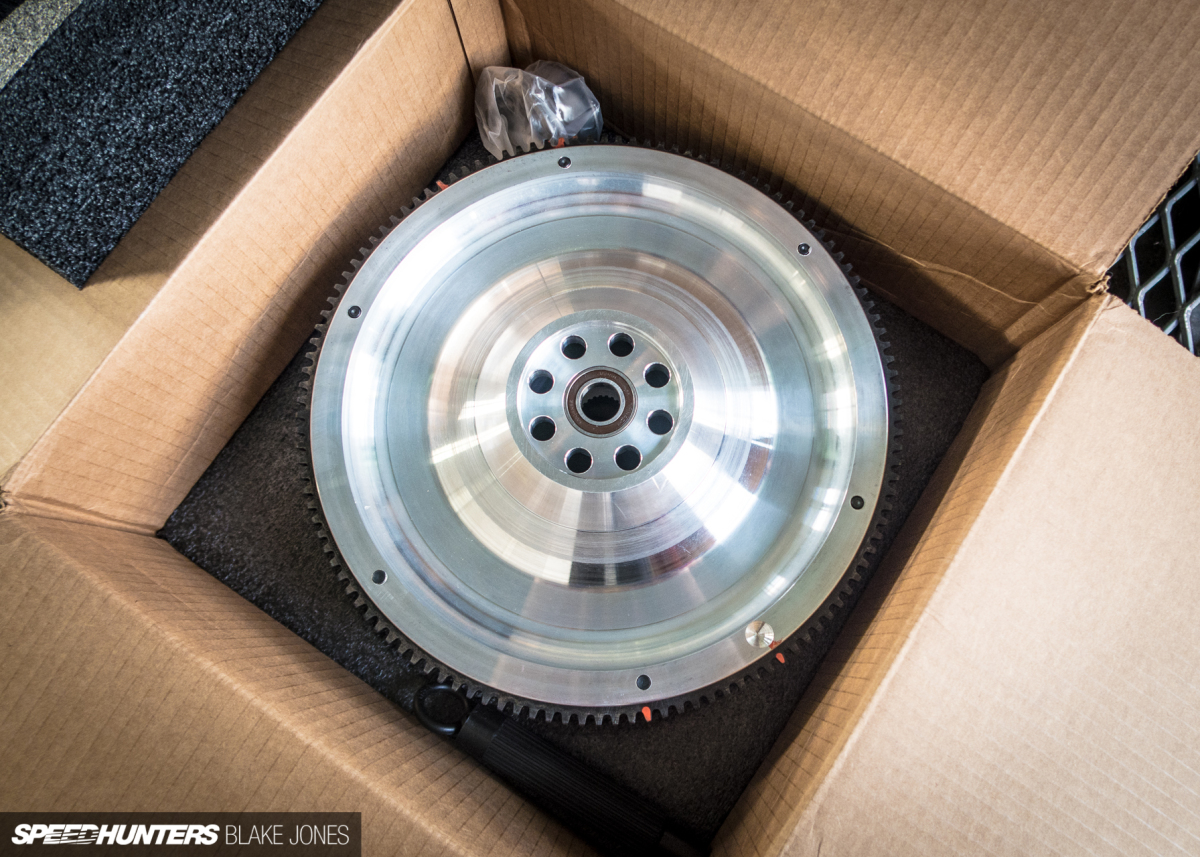
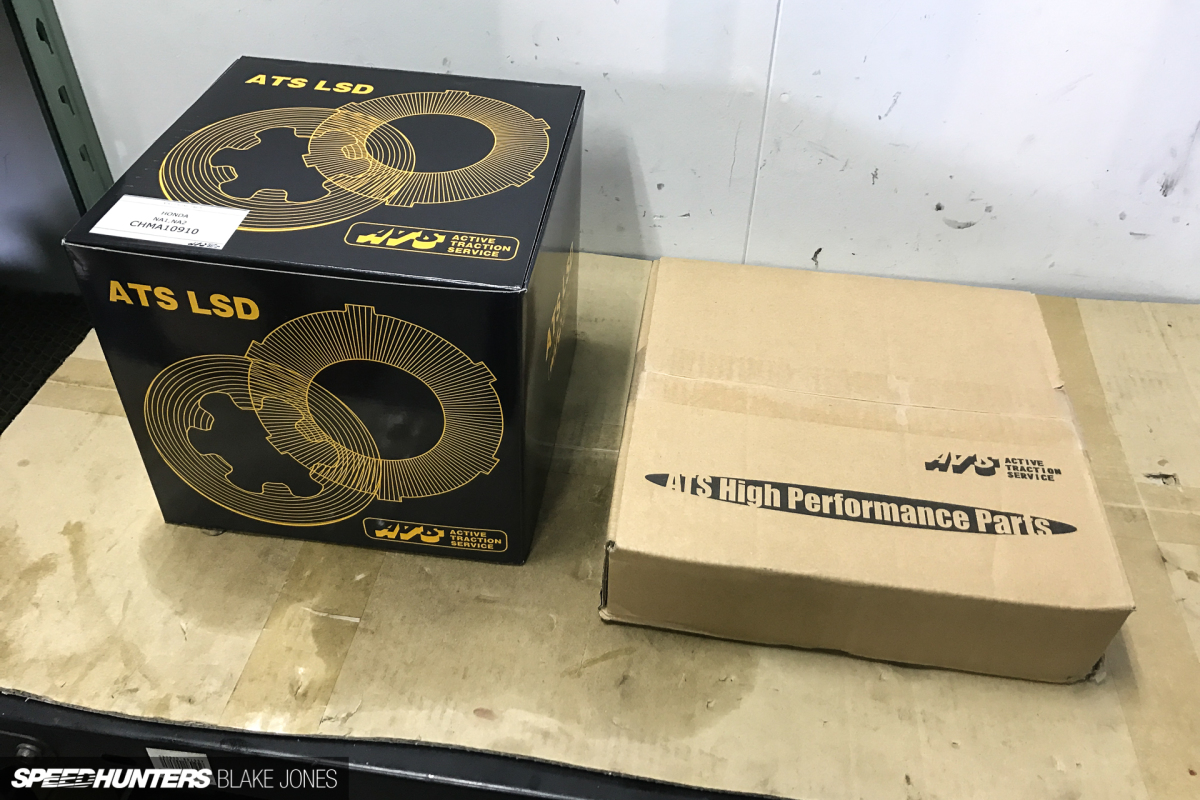
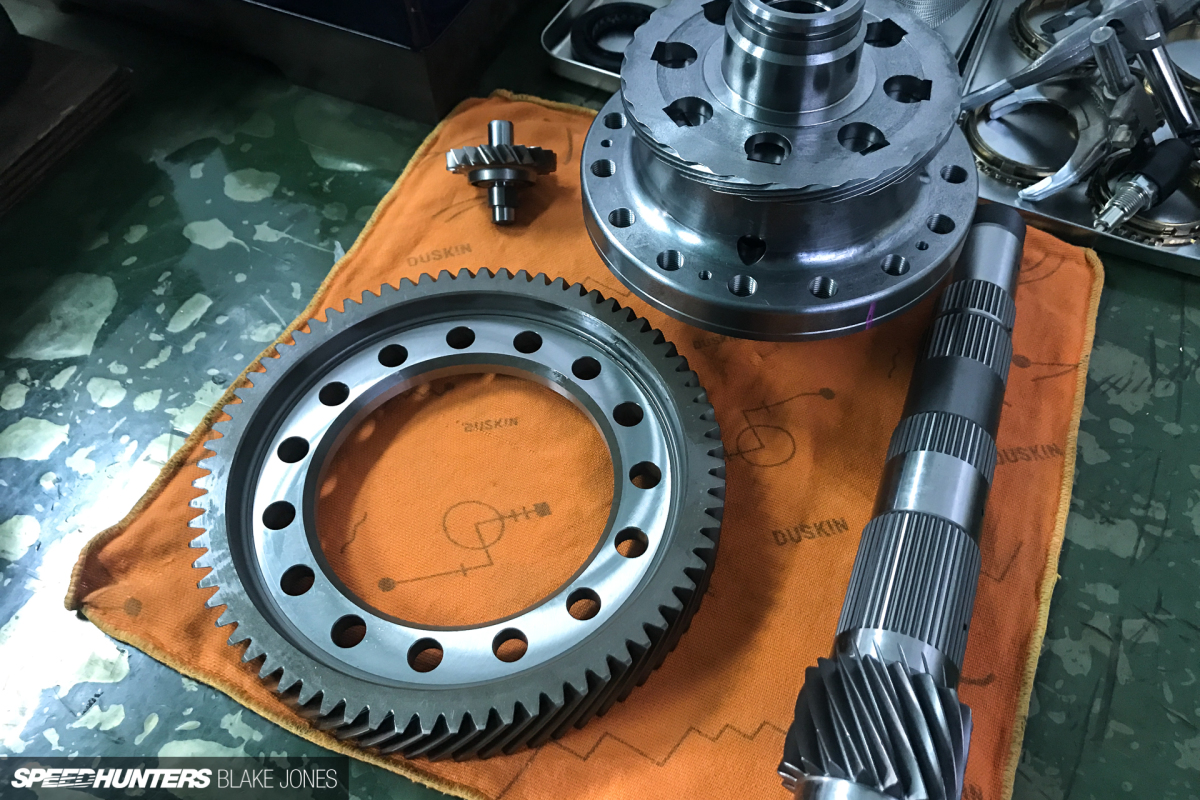
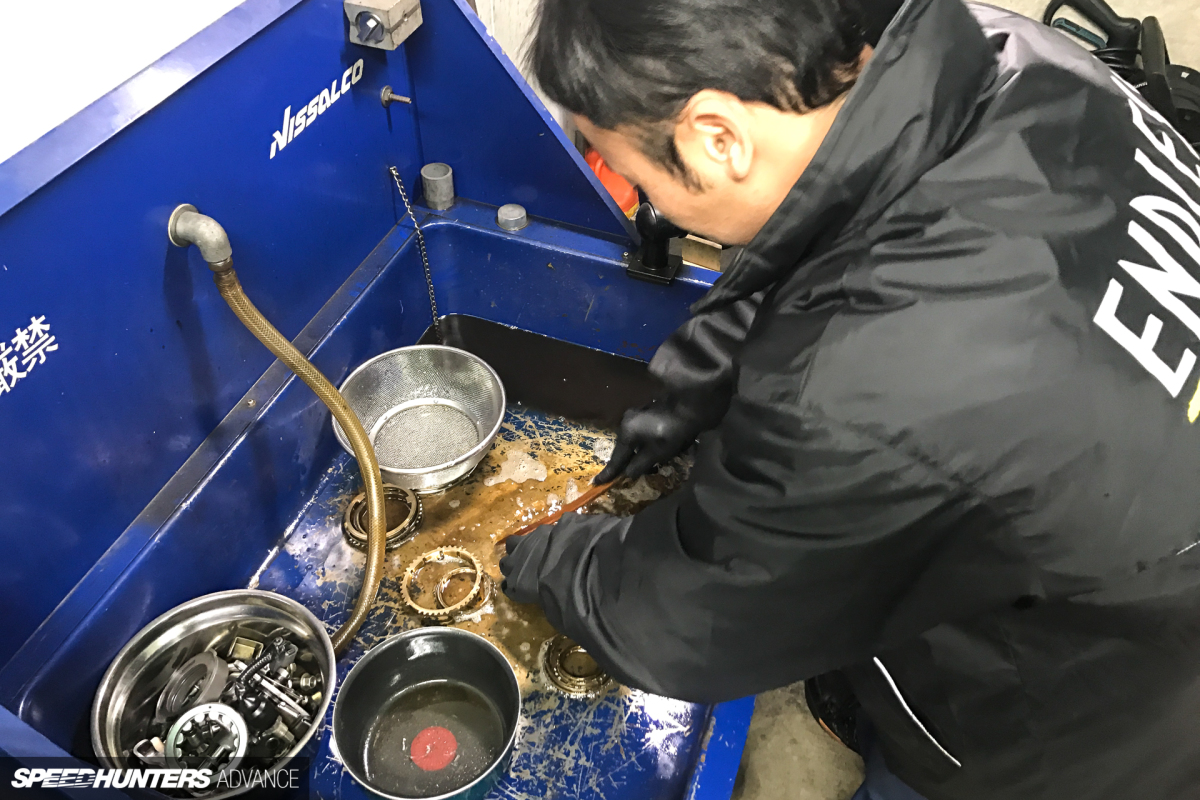
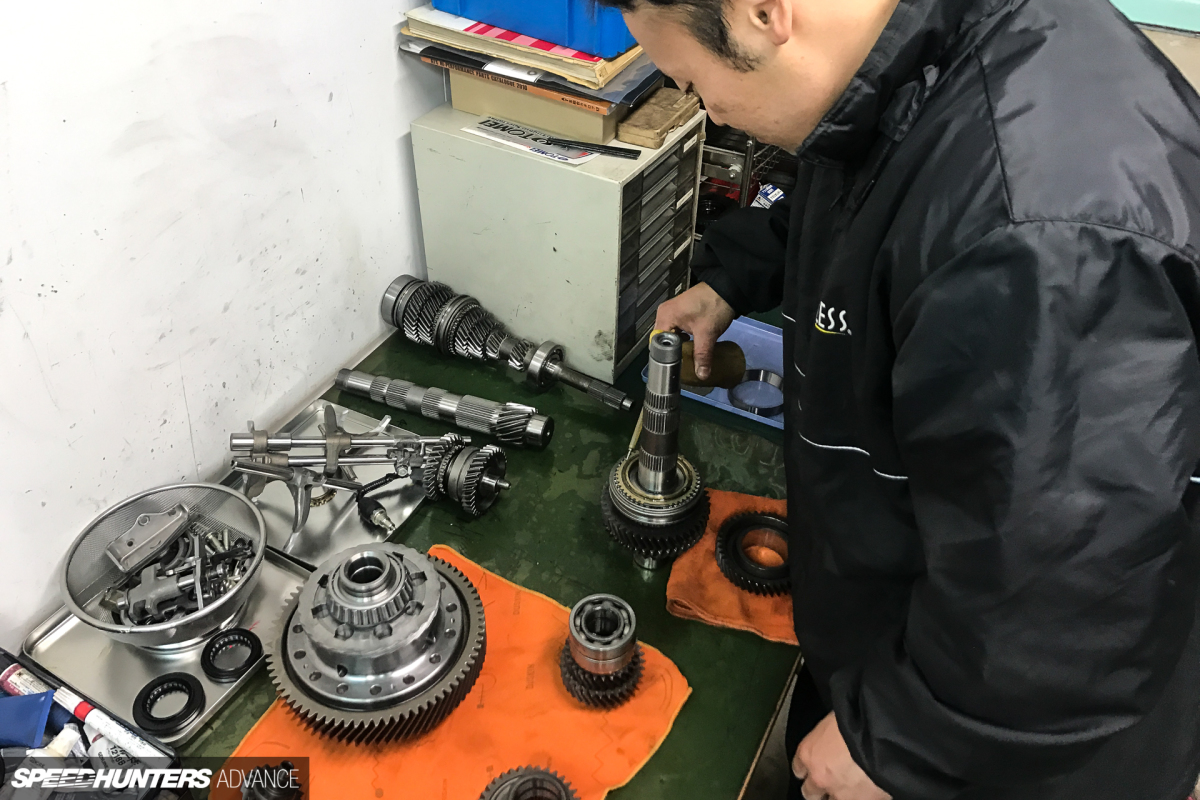
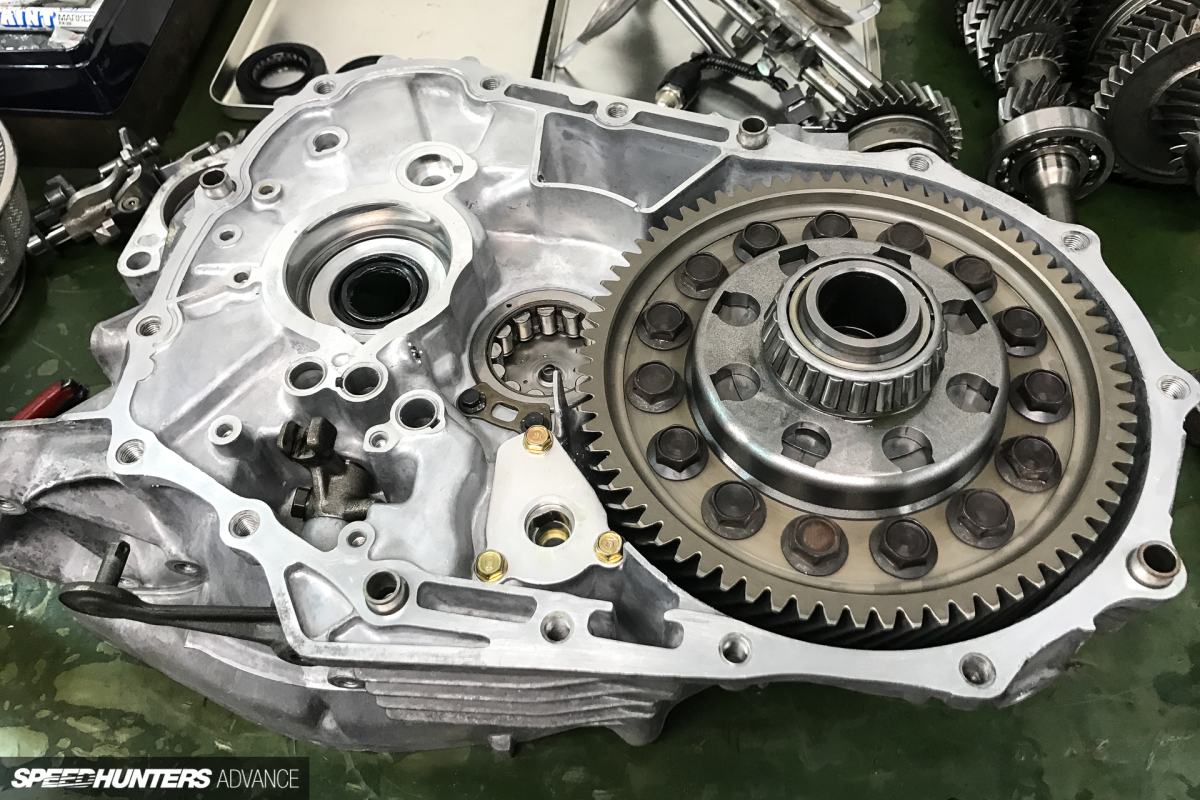
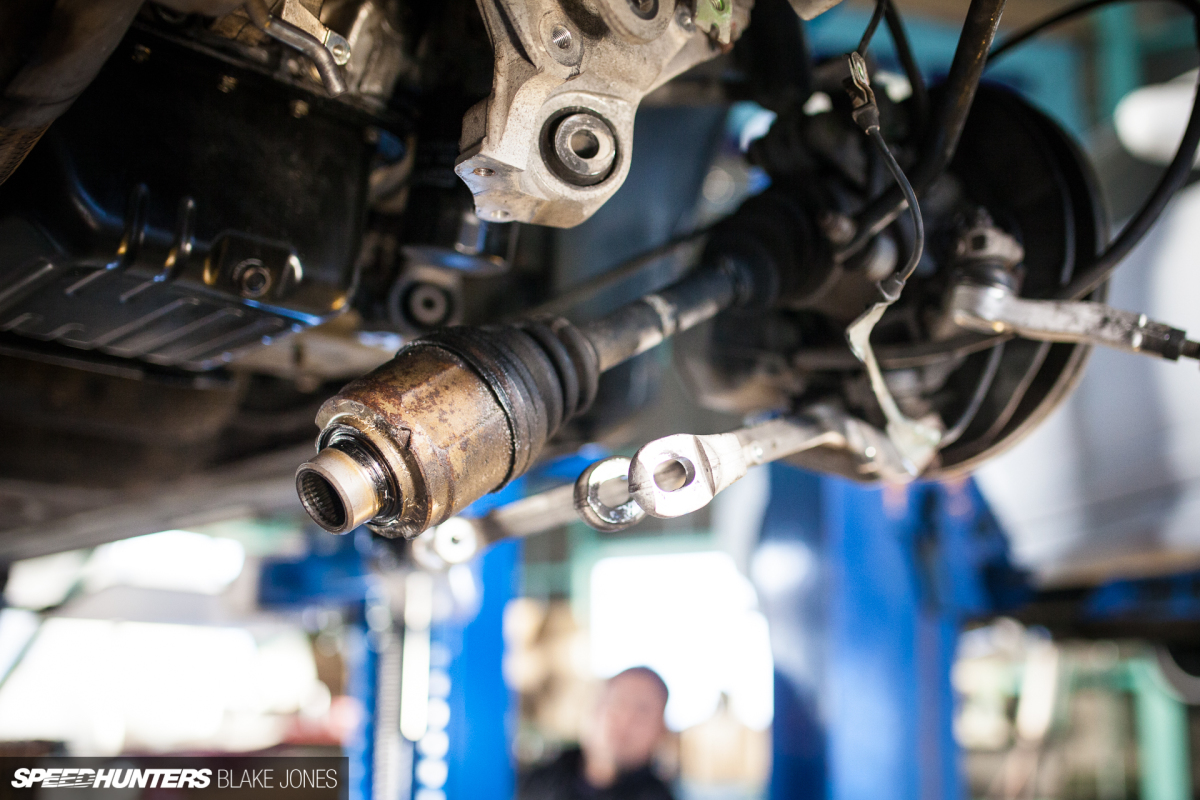
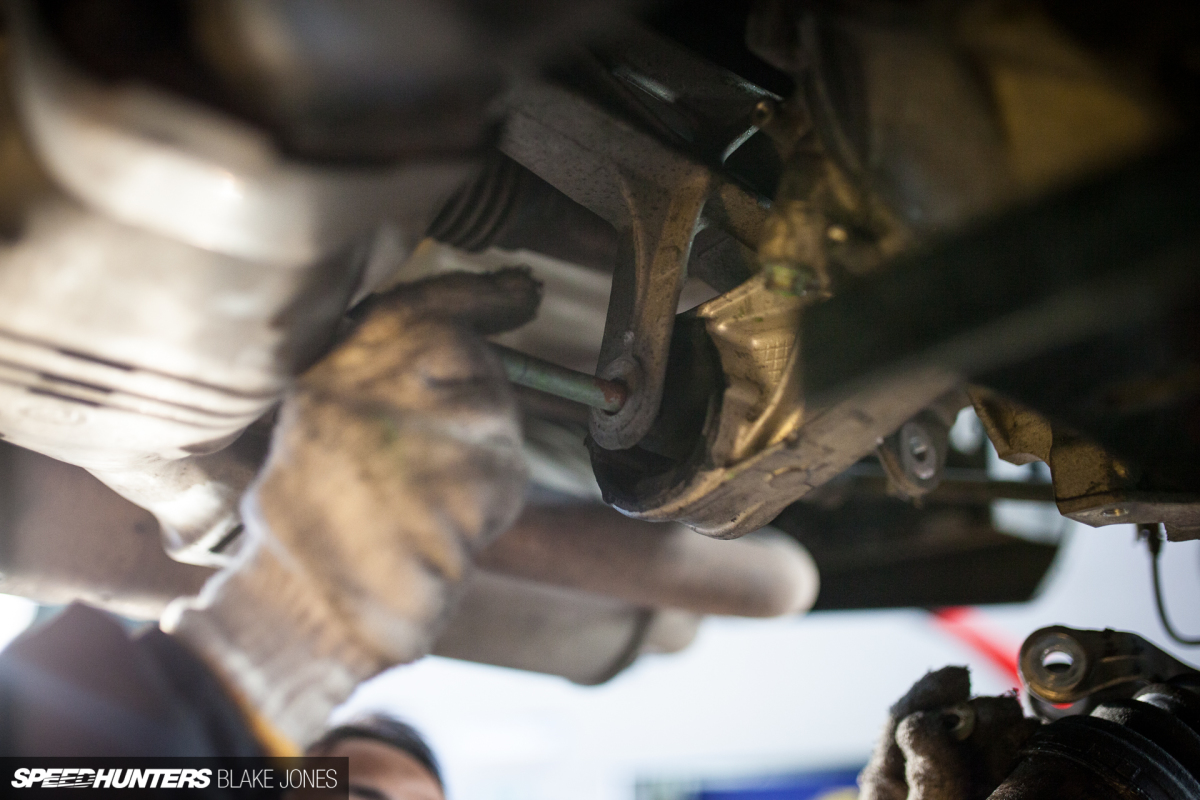
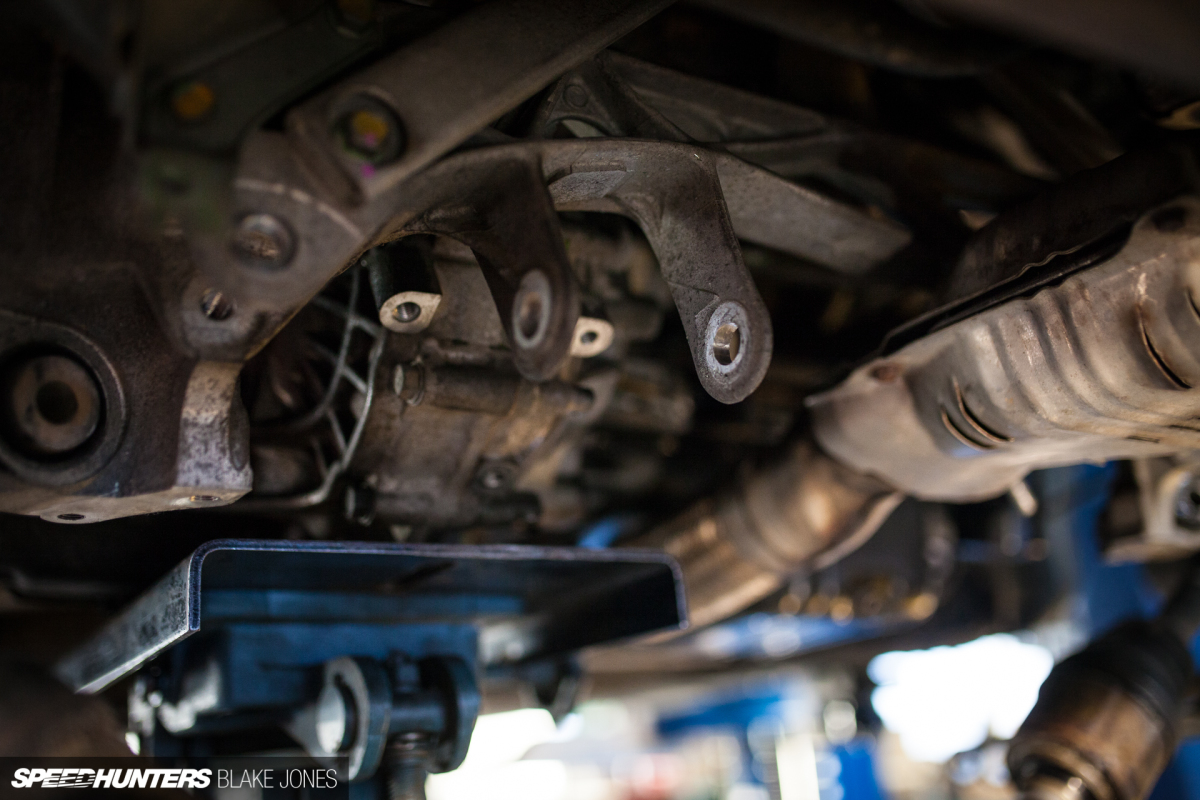
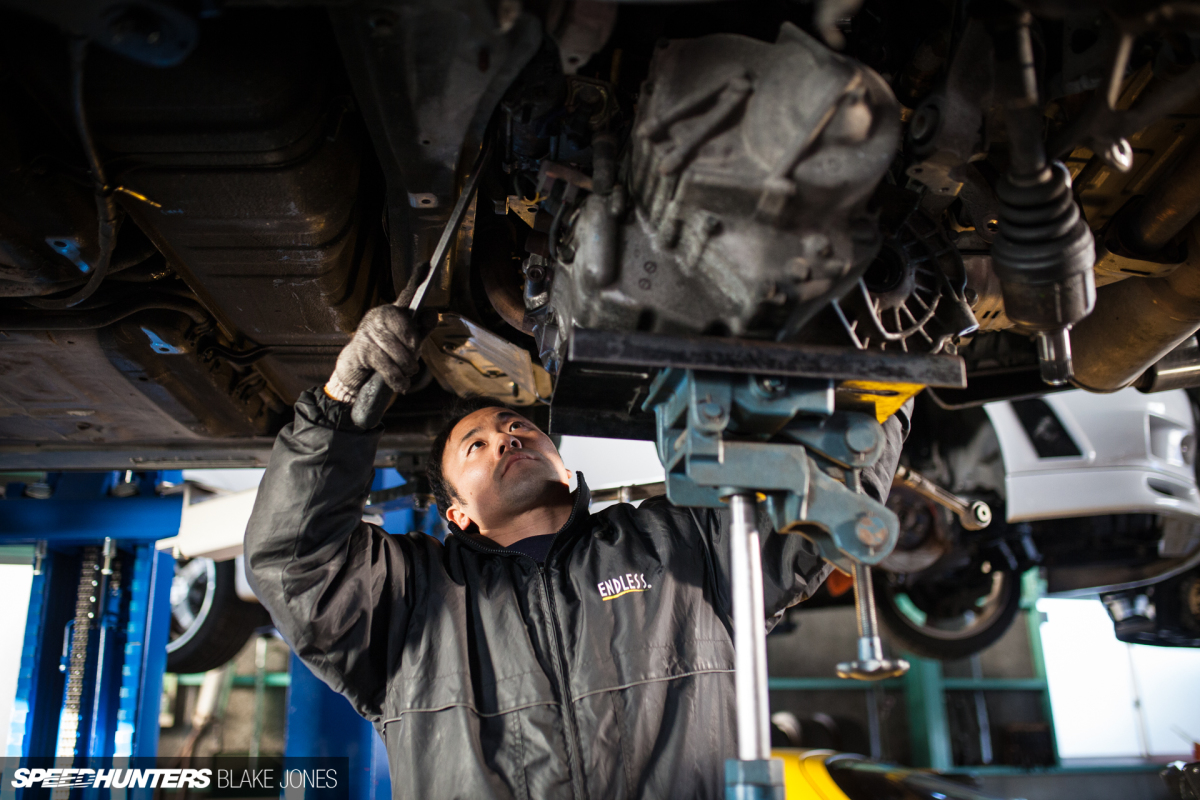
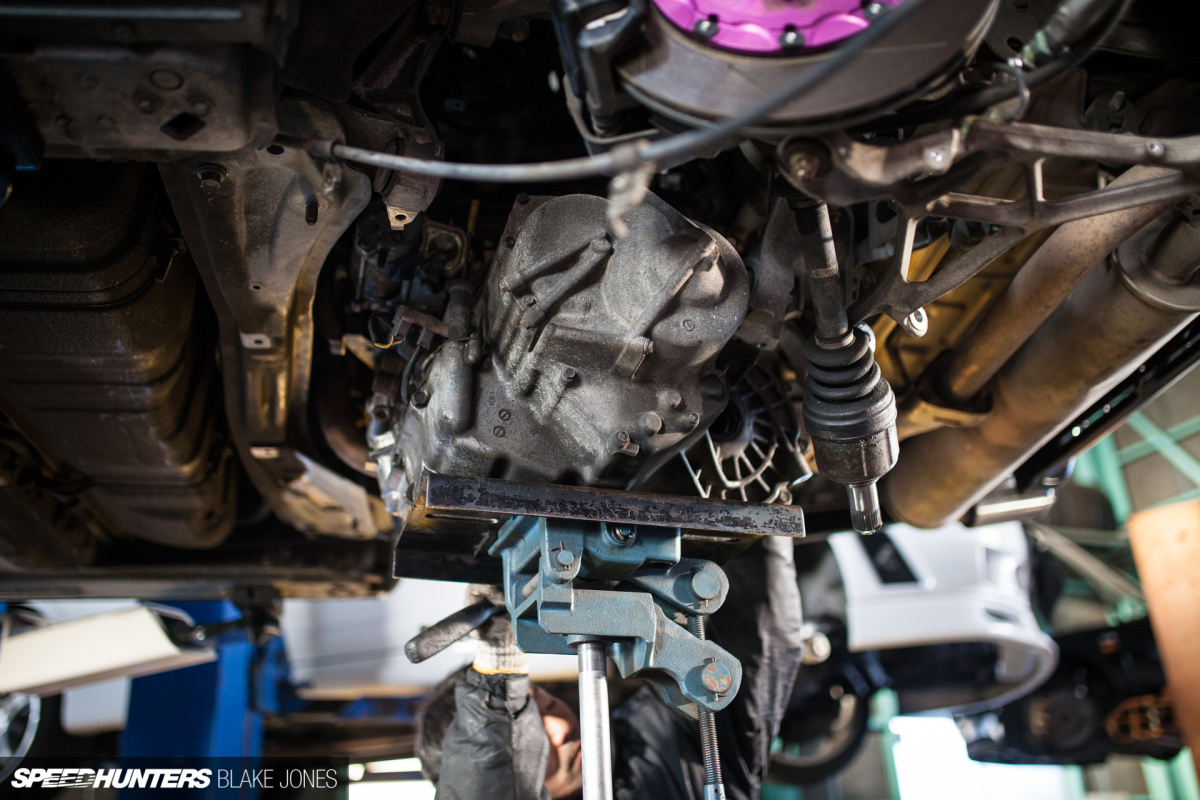
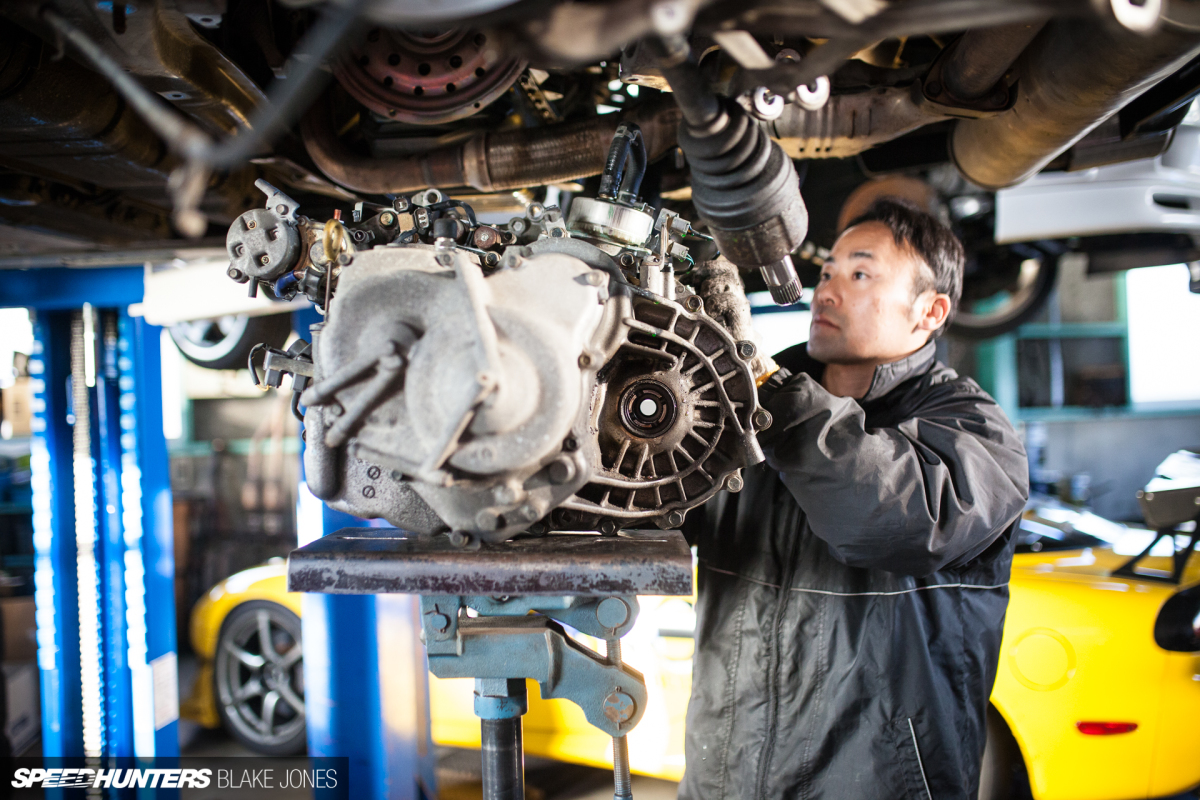
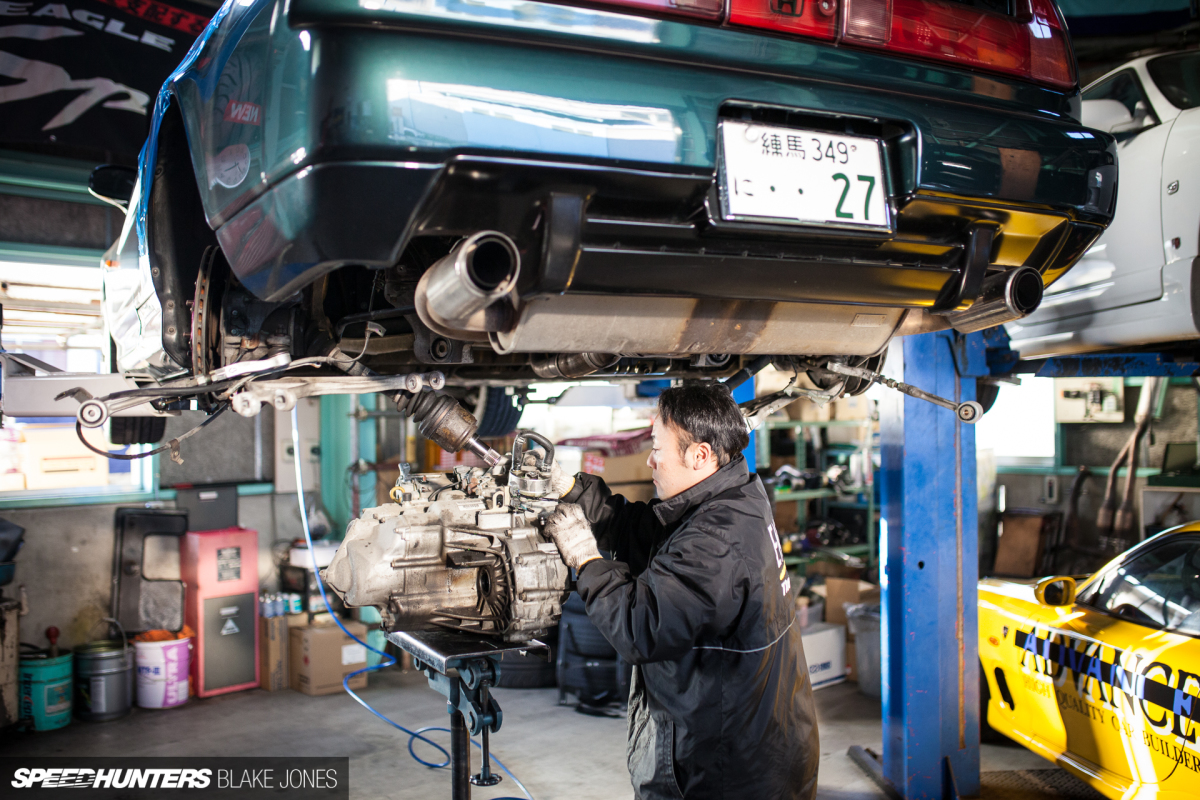
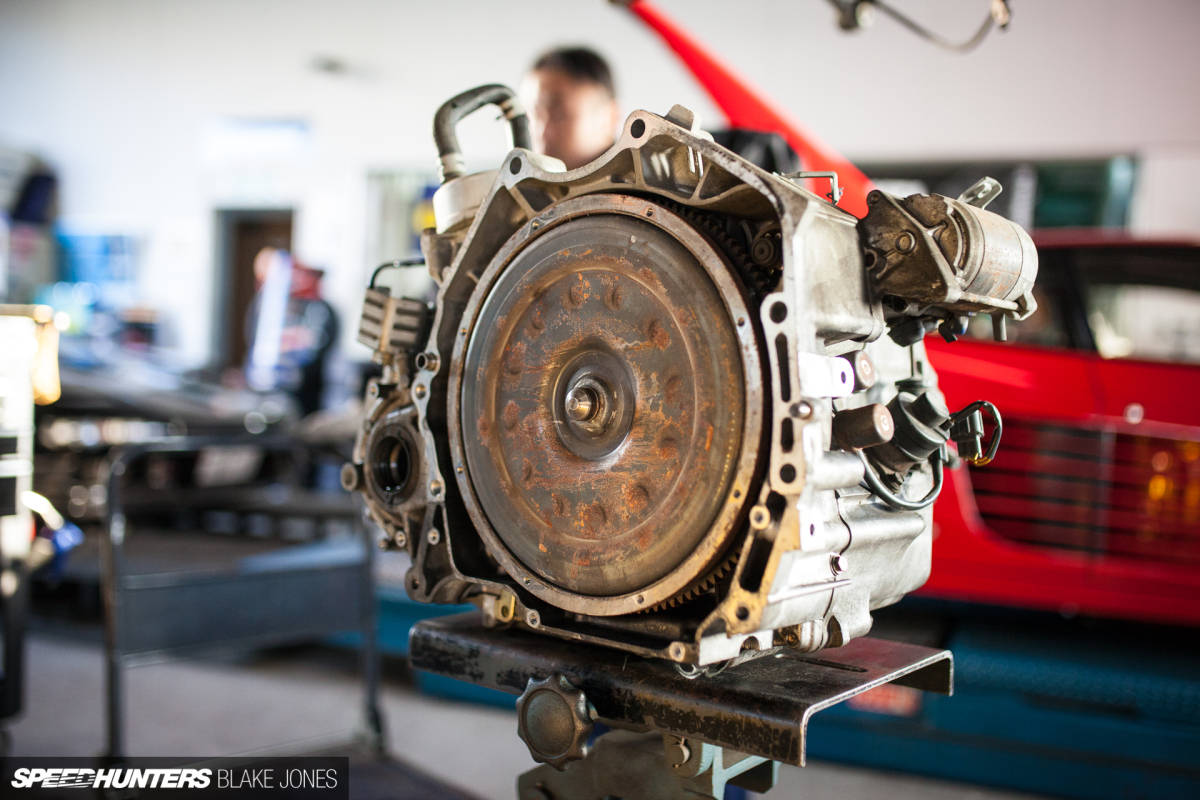
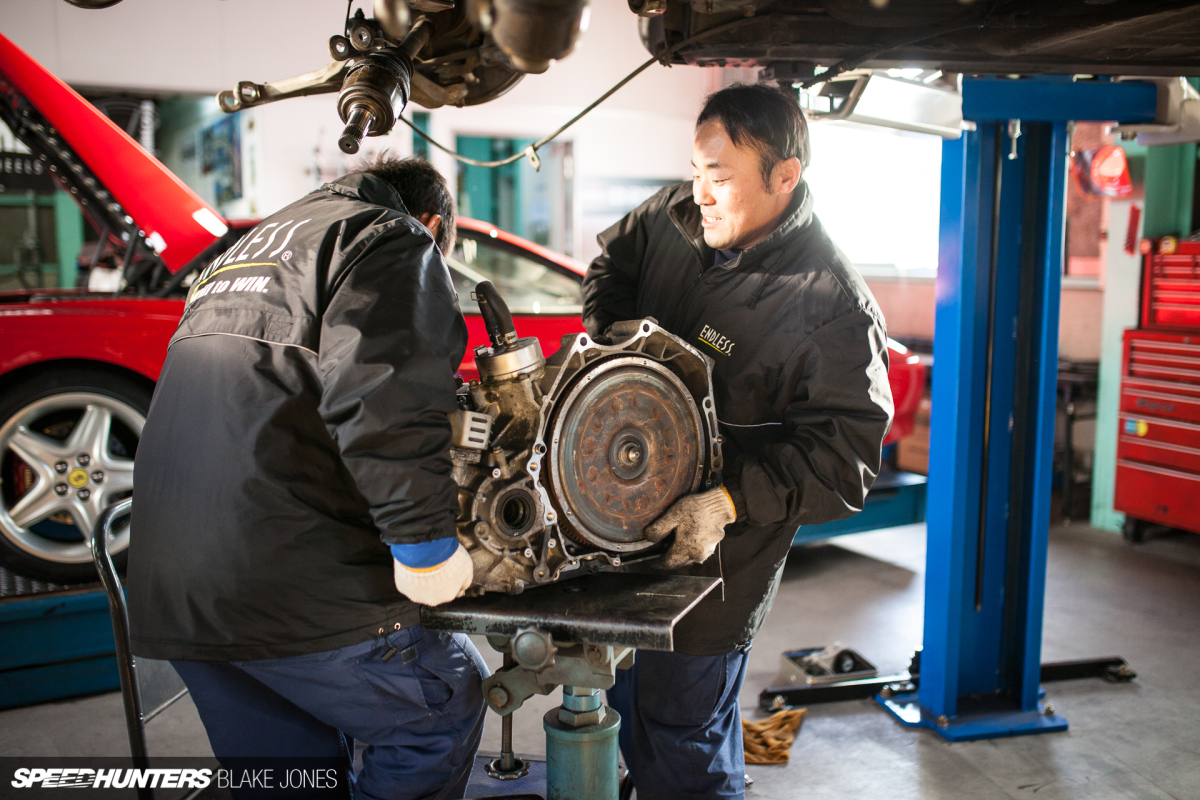
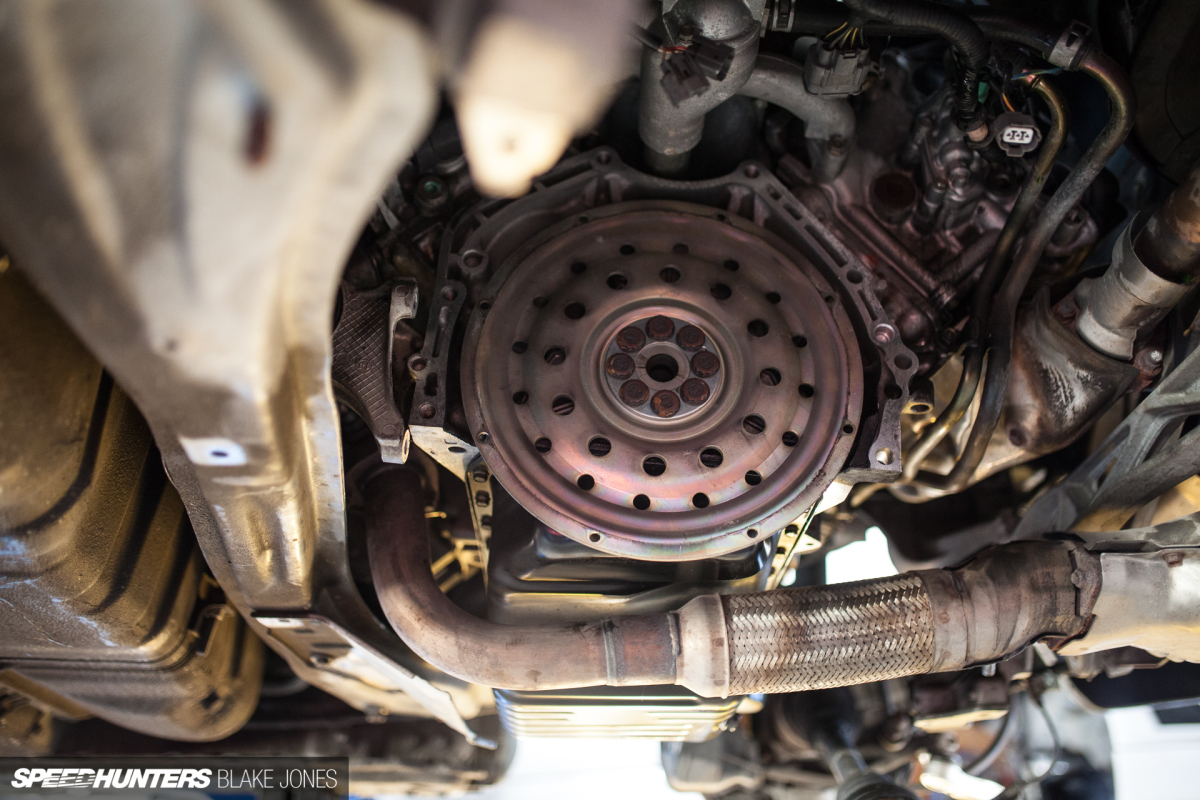
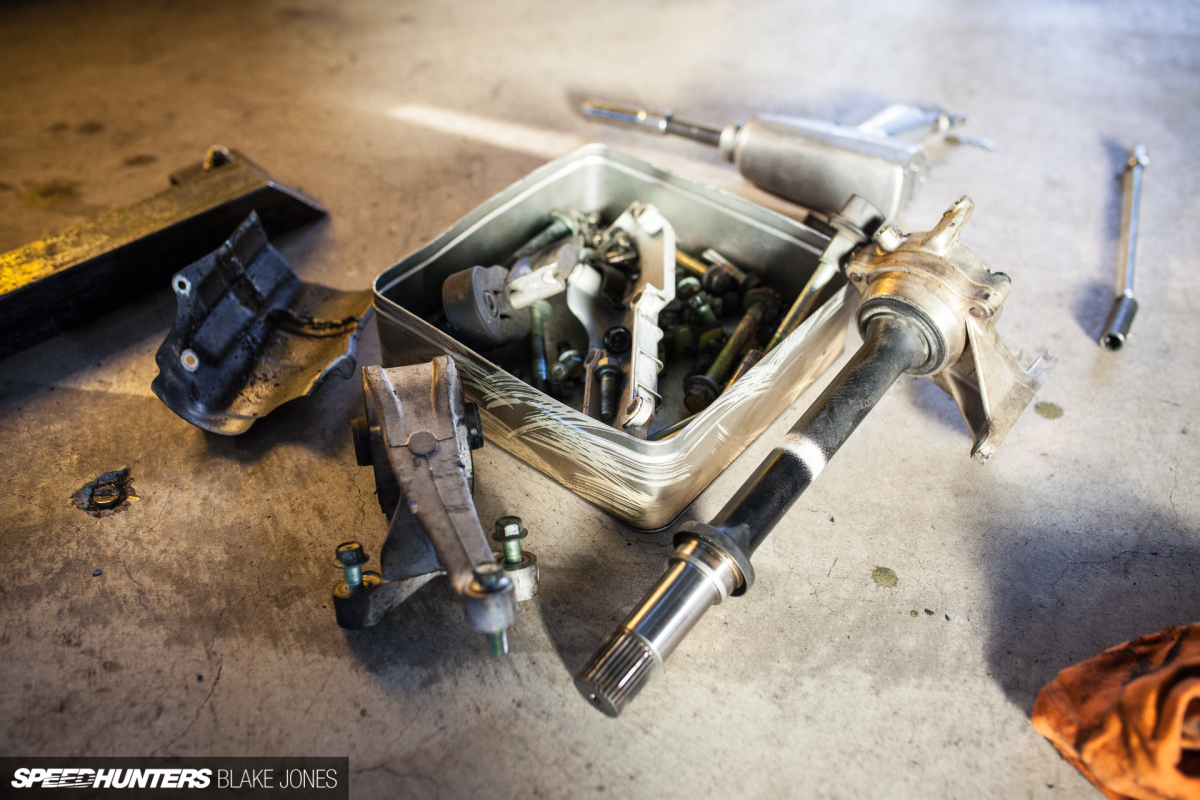
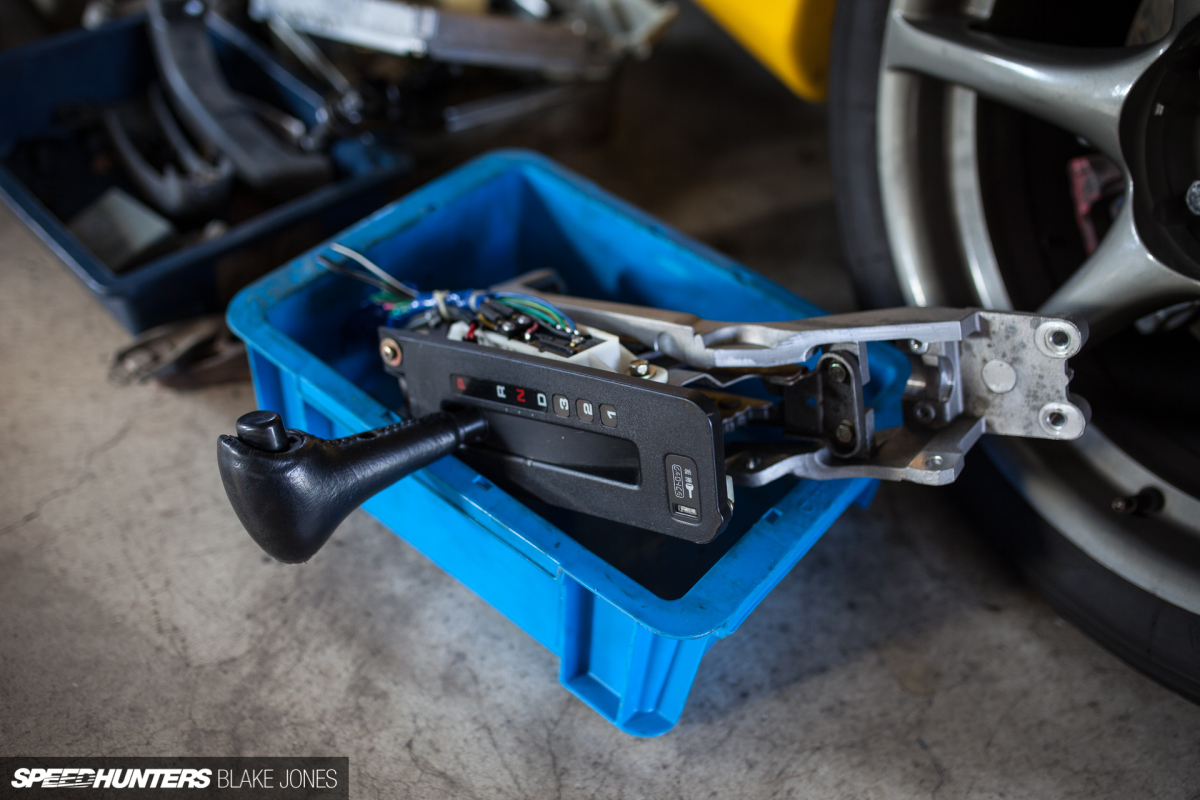
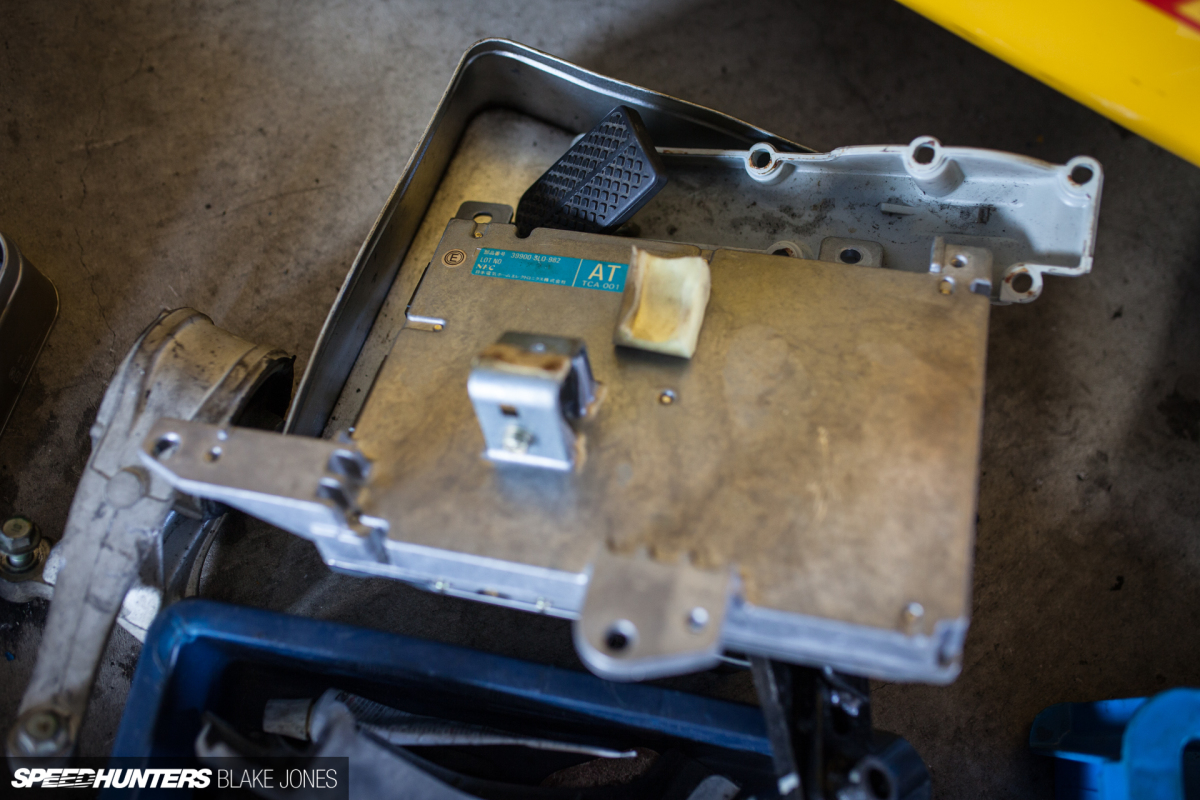
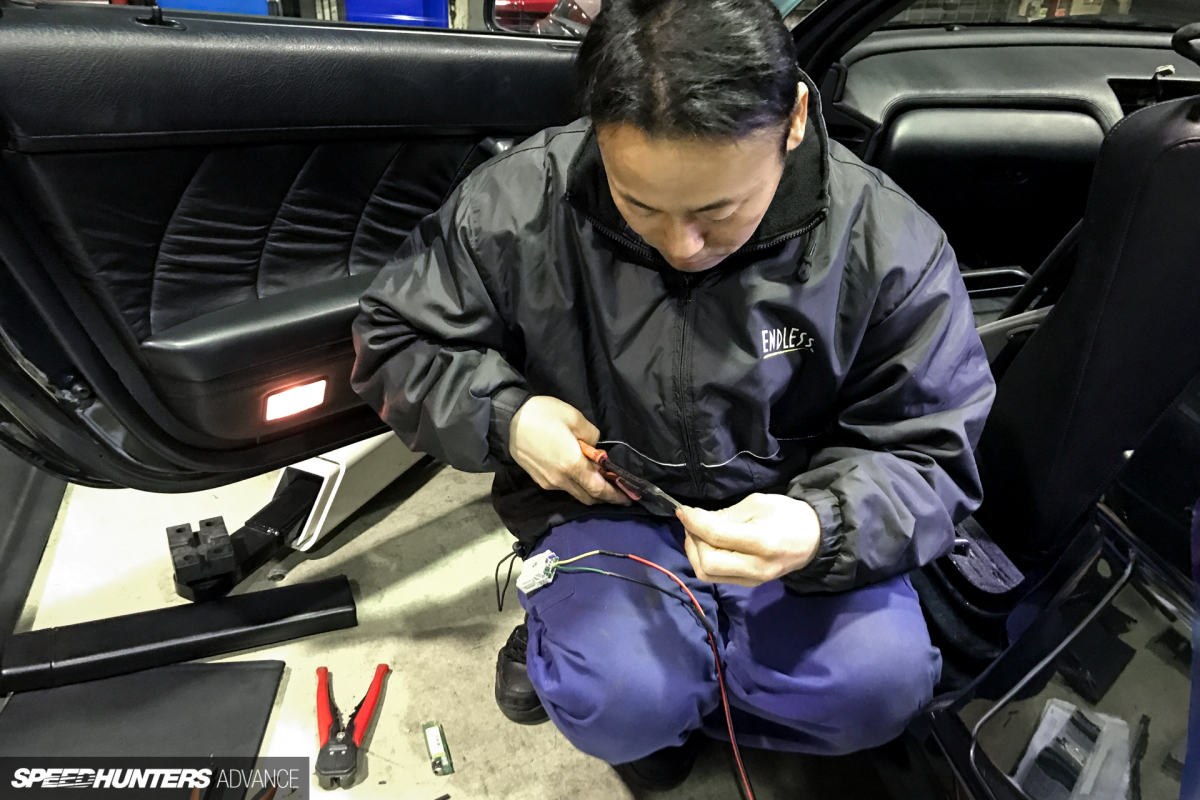
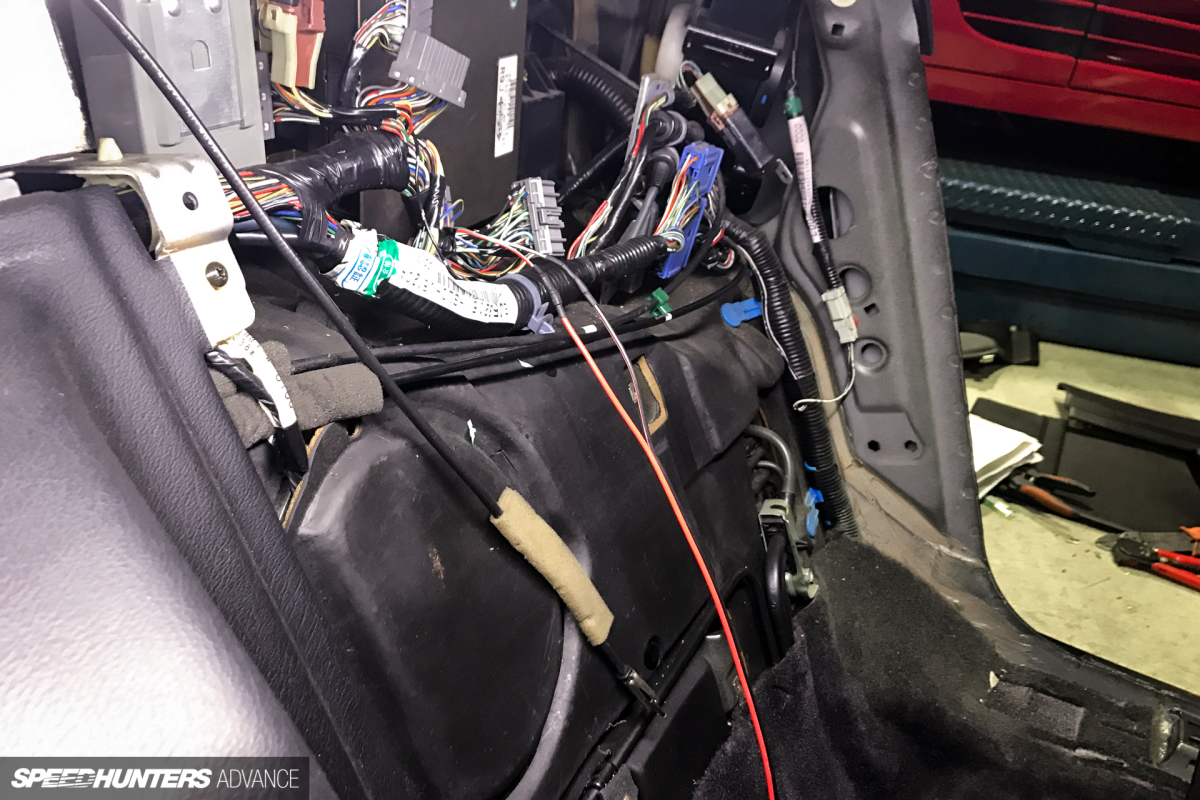
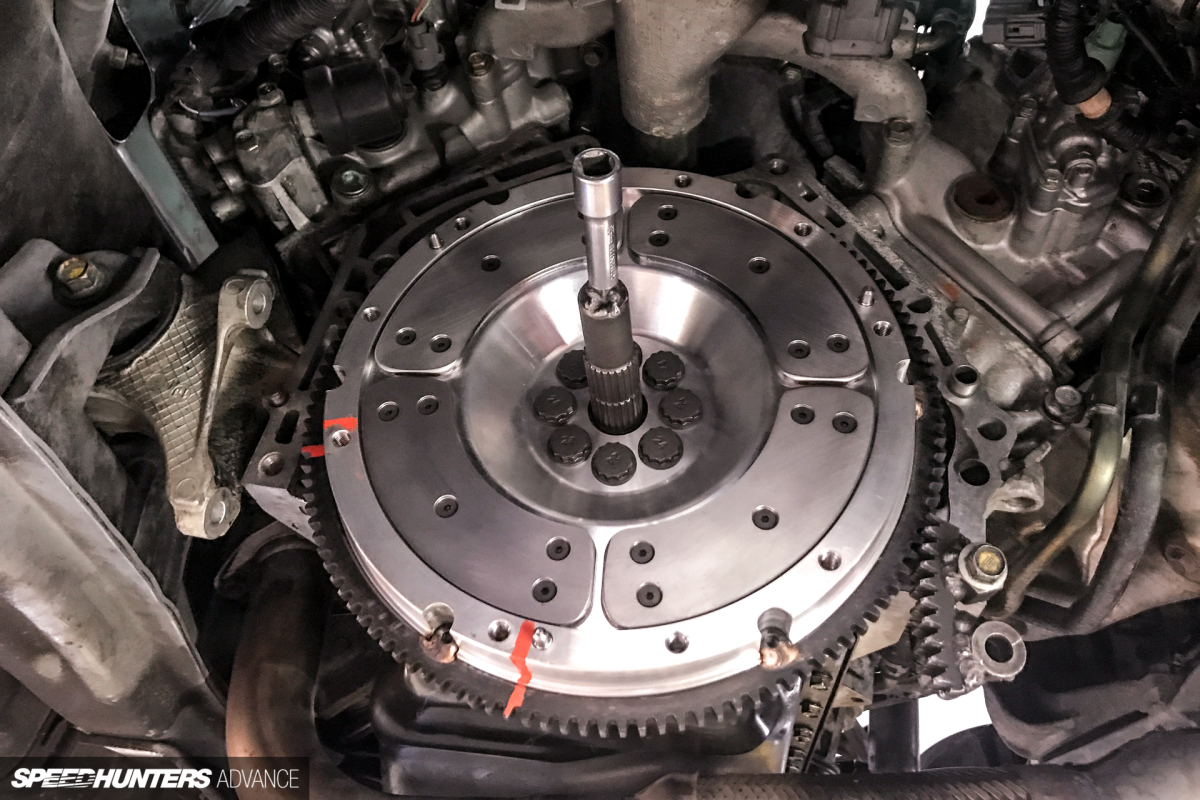
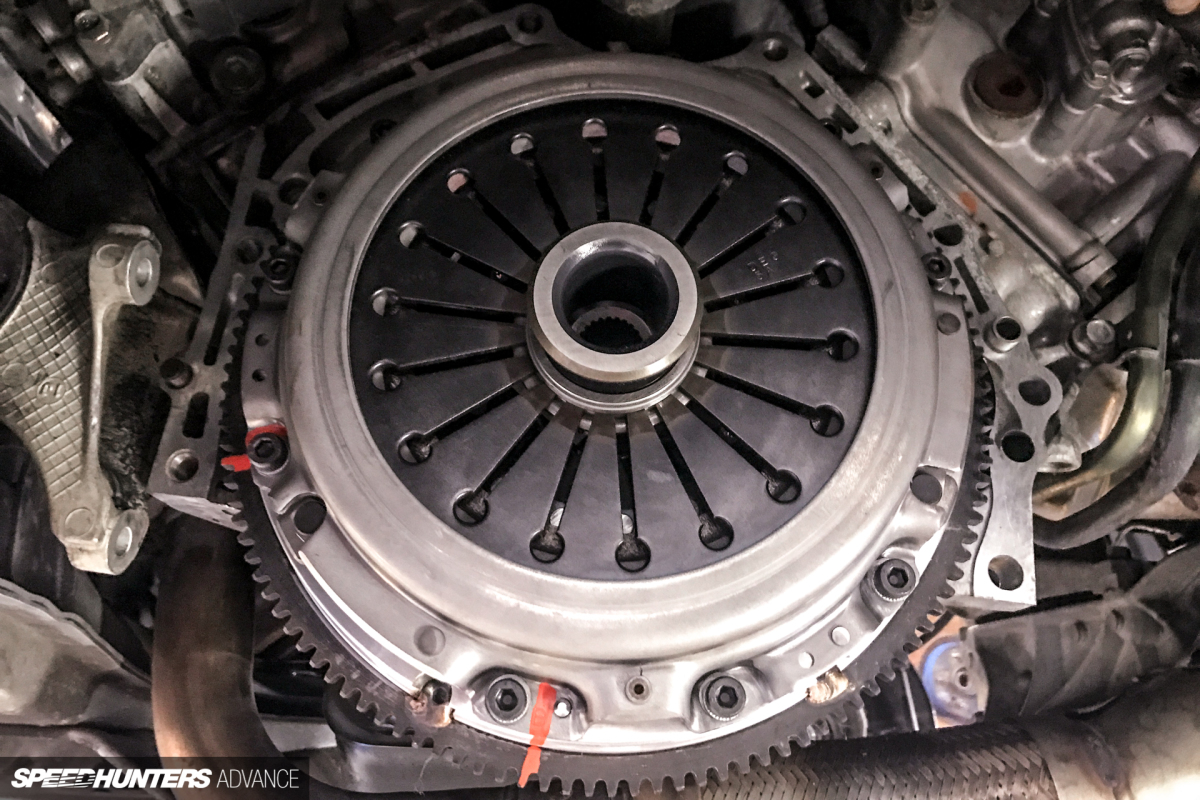
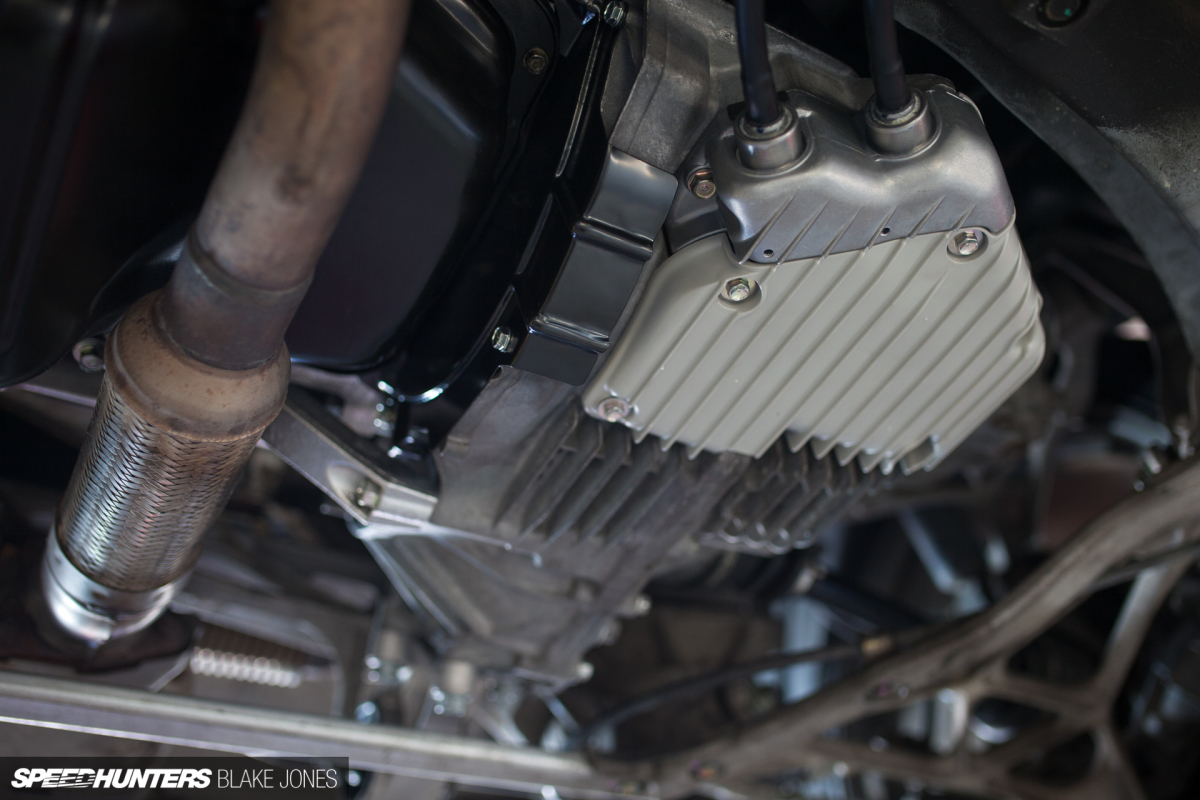
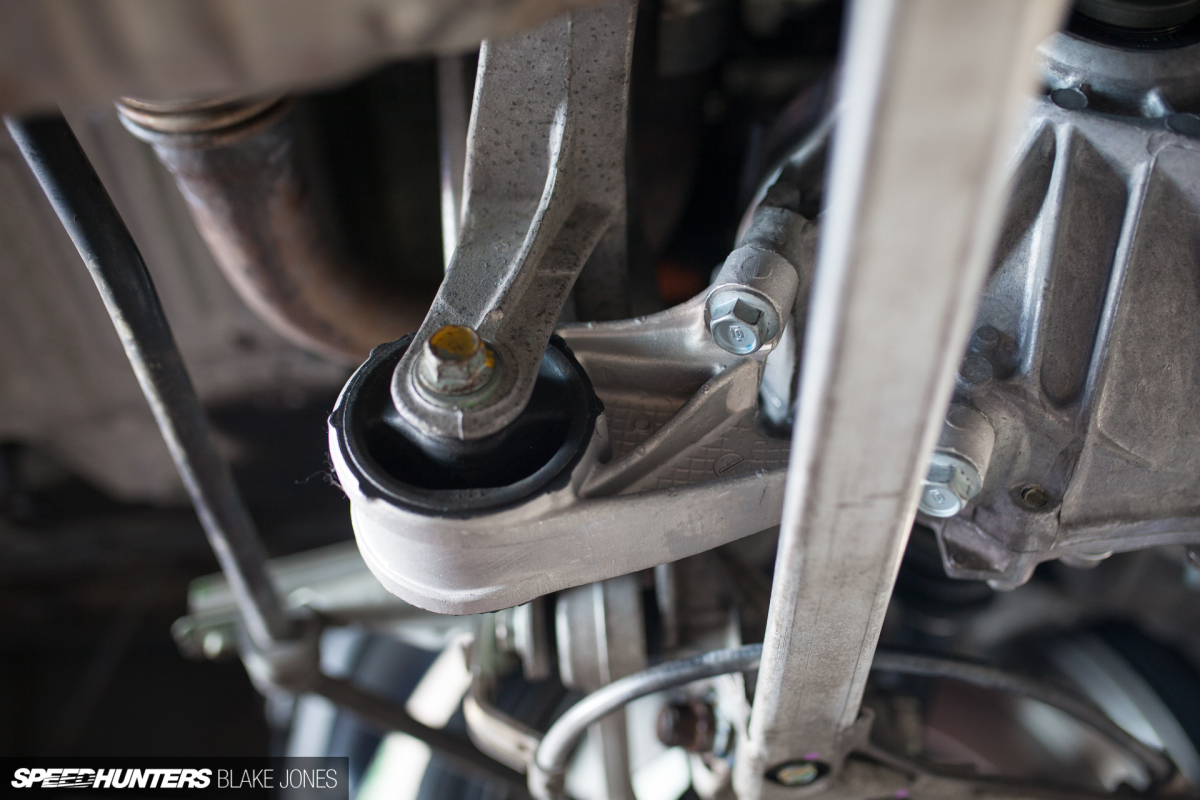
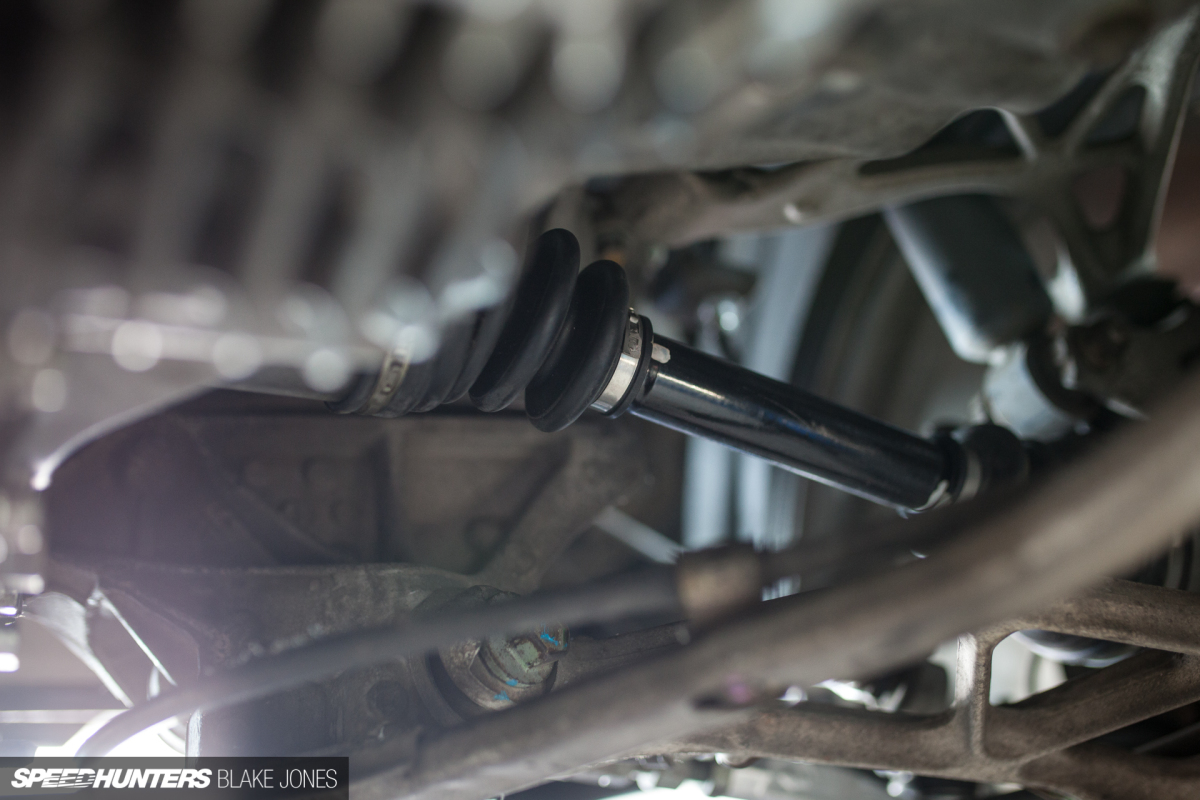
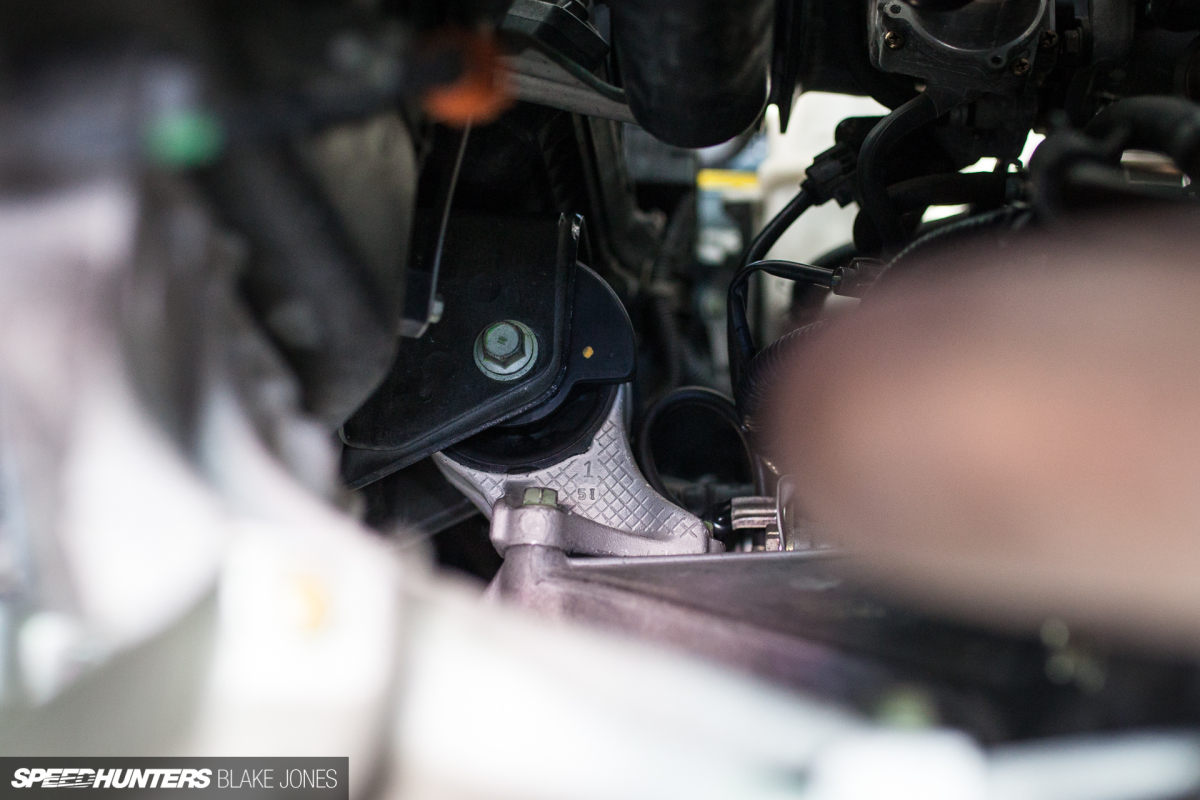
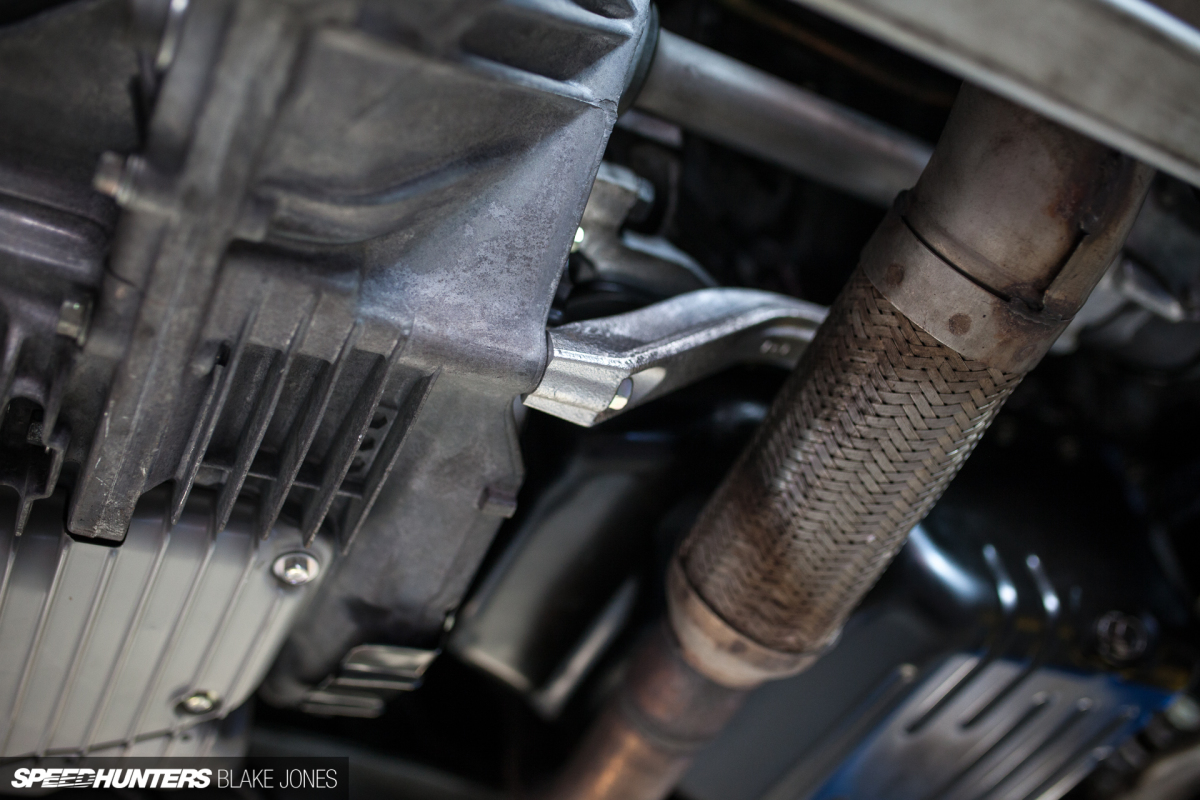
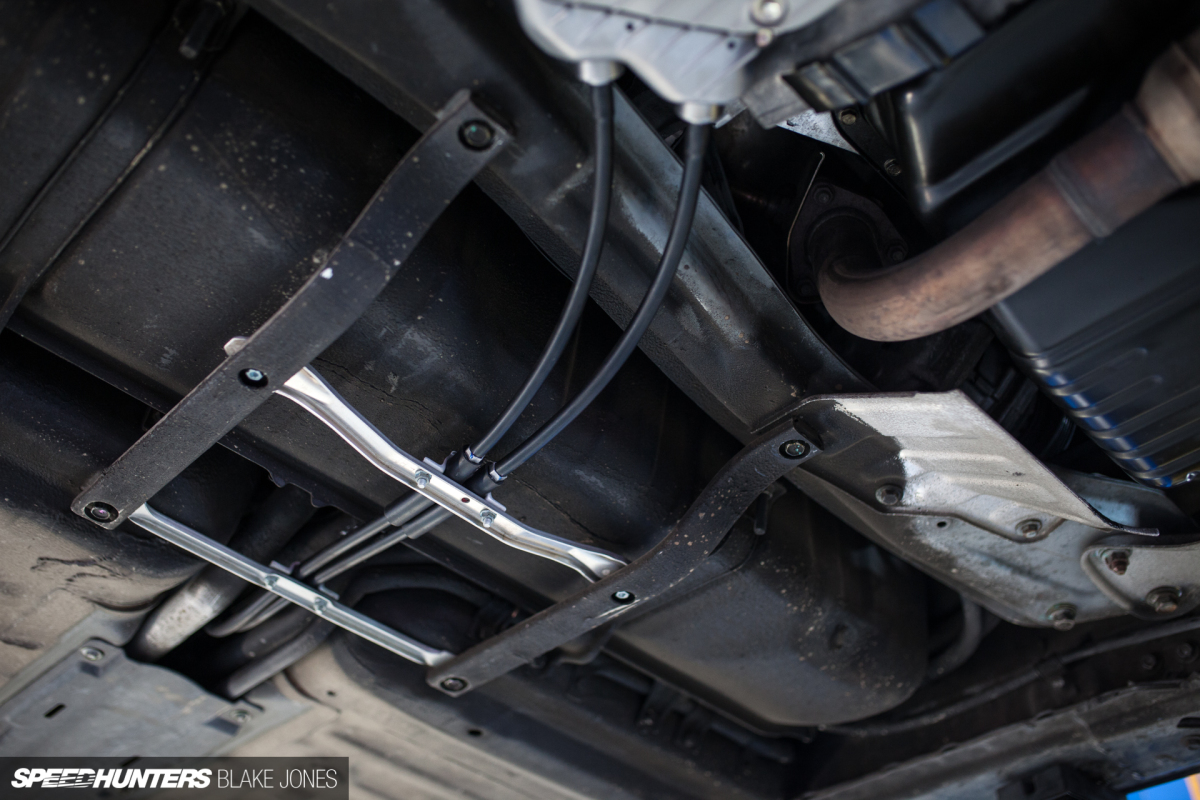





So what final drive did you end up going with?
I'd think if you're under 3k RPM at 100km/h it's fine though.
The NSX-R Ratio - 4.23
Living the dream there Blake!
Phwoar that exhaust! Nice work dude, great to see the progress on this. As for the gauge cluster, did they do a digital dash for these? That'd be sweet!
Funny you mention a digital dash. They never made one for the NSX but the S2000 has a rather nice one, don't you think?
and a company does sell a plug and play kit that converts the NSX signal to the S2000 dash... hint hint!
That sounds like you're hinting at something.... A good bit of friends of mine put s2k dashes in their EG hatches, it's quite a nice touch.
A good bit of friends of mine put s2k dashes in their EG hatches, it's quite a nice touch.
Shame they didn't make one. But yeah, the S2000 one is really nice!
Wow, it is amazing how complicated it was to find the pros and cons of the manuals. I'm a 14 year old car enthusiast, and I've read Speed hunters for about 4 or 5 years. Keep the updates coming!
You lucky bugger.
This is A1. Love it!
Thanks Richie!
Well, I happen to know the original owner wasn't the impotent, comb-overed doughboy you described.
He was actually a virile, pimp who spent so much time "priming" the ladies on the drives home to his Tokyo loft...he never had time to shift a manual transmission. Car was bought at sticker price in cold, hard CASH.
Eventually, the car was sold to some blog dweeb who humble-brags with a name very similar to SPIKE JONZE...but not nearly as fun to say.
Say it with me now: Spike JOOAANZE!
It's kinda cliche at this point for car guys to ALWAYS bash the previous owners. If they were that inept, they could've beaten the cars into the ground and sold the remnants as scrap. BROs should be grateful they can get their greasy little fingers on the car of their dreams...regardless of the spec or condition. Want an immaculate, perfectly spec'd car, then pay up!
Oh wait, then you can't brag about what a good deal it was. Oh, life's dilemmas.
lol they blocked me from upvoting this brilliant ocmment
The first owner was actually an old lady who wanted an automatic Honda after her leg started to give awful pains driving her Ferrari in Tokyo's stop-start-traffic
is it just me or has Mr. Blake's writing style changed (in a good way)?
this article seemed more interesting in a more....speedhunters way haha
anyways well done on the build and post, looking forward to future updates.
I don't know what that means, but thanks I guess?
Really enjoyed this article Blake- fascinating to read and follow the upgrade process. Some SH articles are a bit light on detail, but I think you've nailed it here. Great job.
Glad you enjoyed it mate!
Nothing beats a Japanese sport car from the 1990s, and certainly Honda is one of those who put so much emotion, and character, into their cars.
Blake that exhaust is interesting, looks like a custom fab from the ground up
Blake i love your nsx and love what you have done thus far....and yes you do sense a but..that center exhaust well just a no from me but also i do agree it is different...maybe with a diffuser mounted it will then definitely look the part....Looking forward to your next post. o ja on the s2000 cluster idea i say why not dayum that will be great!
I was a bit unsure when it was first fitted but am truly in love with it now. A diffuser is on the cards a bit further down the track.
Okay, this center exhaust looks awesome.
Sounds alright too!
Awesome update as usual.
I have a question regarding the rear subframe removal. Did you re-use the rigid collars fitted previously or were you forced to purchase a new set?
Good question Martin. The recommendation is to replace them (and I may do so eventually) but for now I'm using the same set.
Thanks for the quick response Blake.
I have a set of Collars on my FN2 CTR, I was just wondering regarding "real world" experience with re-using them. I don't think they could be reused infinitely but a reset of the subframe one or twice surely can't destroy them completely.
I'd don't foresee the subframe on my car being removed any time soon. No real work to do there. I had the collars installed the same time I upgraded to an LSD, so no need to adjust the subframe again. Keen to get your experience going forward.
Love the swap.
Though tbh, the single tip doesn't do it justice. I still think twin tips look better on a car like this. Sorry.
Nice
Is there anywhere that I can find out more about that 370z?
Yep, on this website in about a week!
sweet!!! I'm excited now
Proper speedhunting, since you dropped the sub frame, did you run the rigid collars too. Seems like the perfect time.
The single tip makes it look like a riced out bug, no!
Sorry if this is personal. But how much did all this cost you?
Twice as much as I thought it would!
i got on my nsx na1 the comptech 4.55 final drive and it was really fine both on the road and on track.... for camshafts i used the Revo-tune japan “street cams”.... and with a custom tune of the stock ecu we had 35 hp gain....
Nice one. Guess it comes down to wheel/tyre sizes too - I did five hours on the highway today and was really glad I opted for the 4.23 - think I'd be eating too much fuel with anything shorter.
35hp from cams and a tune - that's awesome. I'll look into Revo-tune based on that!
This post has gone on long enough, pssshhhh...
You could write pages of detail and I would happily eat them up, great write up with photos!
Personally i’d prefer twin exhaust tips though- central single reminds me of VW Beetle
Thanks Gnar! Funny you say that, my mind always goes to the double-barrel exhausts some 911's run in the centre, but I guess they are just fancy bugs after all...
Lovin' the build with so much thought going into it. I was just saying to a mate that this ain't no show car to feed one's ego and then be flipped when over it. It's a passion project. Proper.
Haha thanks mate. I wish this could somehow make me money, alas the only ones making profit here are Advance and Honda's Spare Parts department!
Looking great mate!
Cheers Dave!